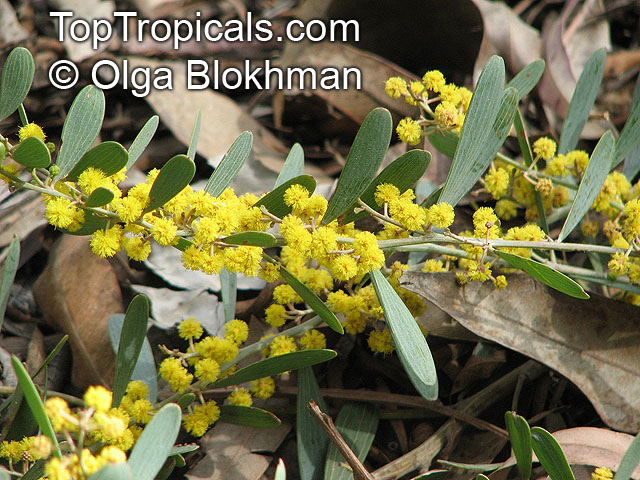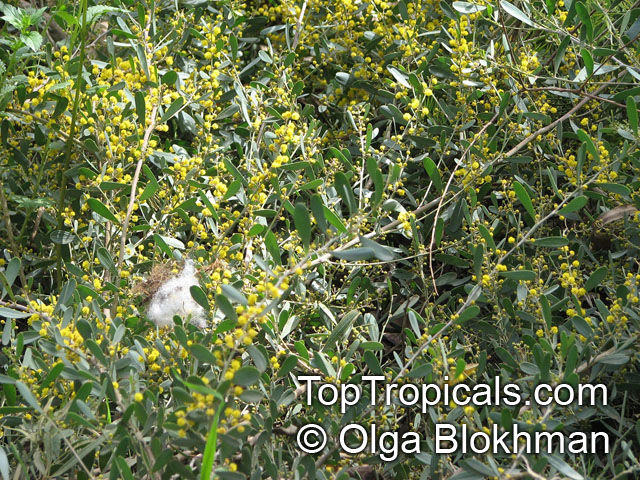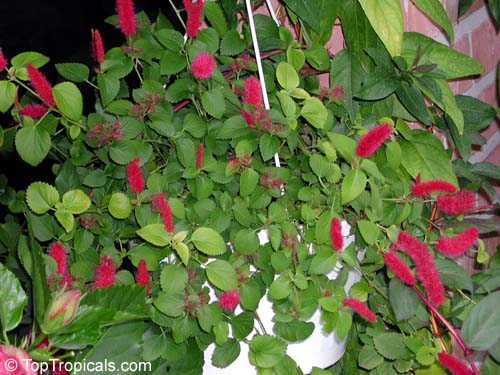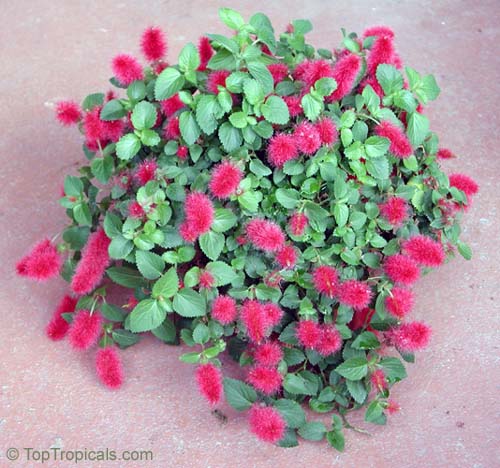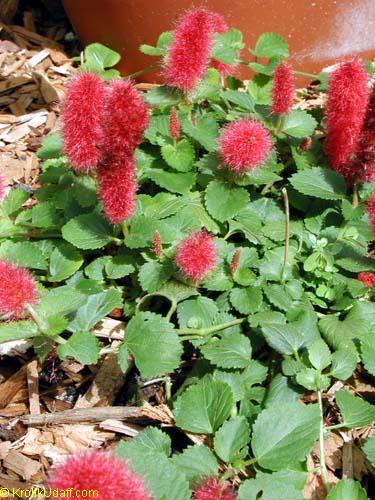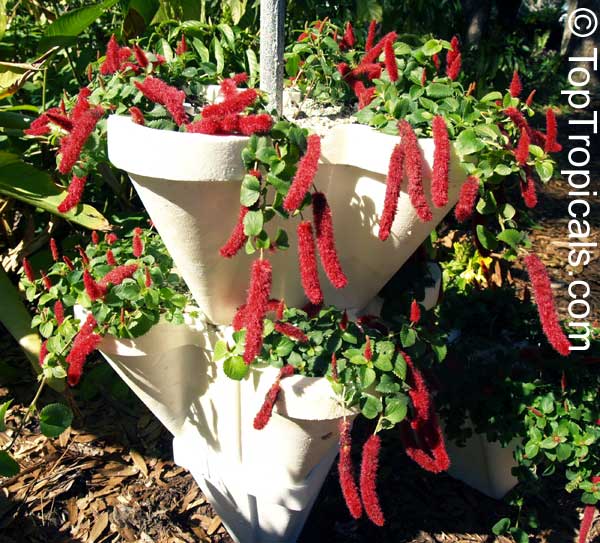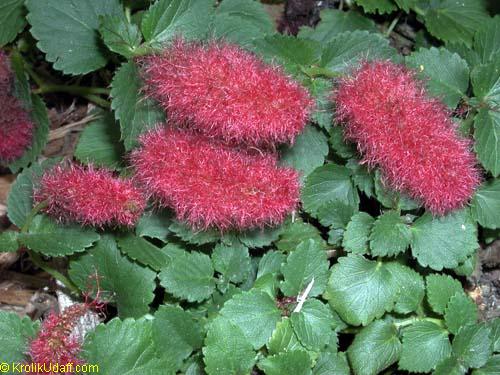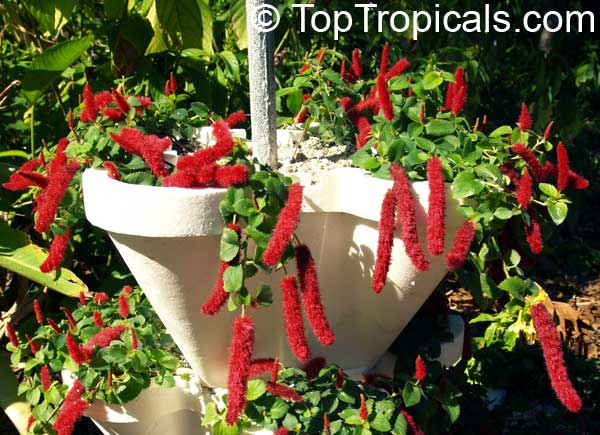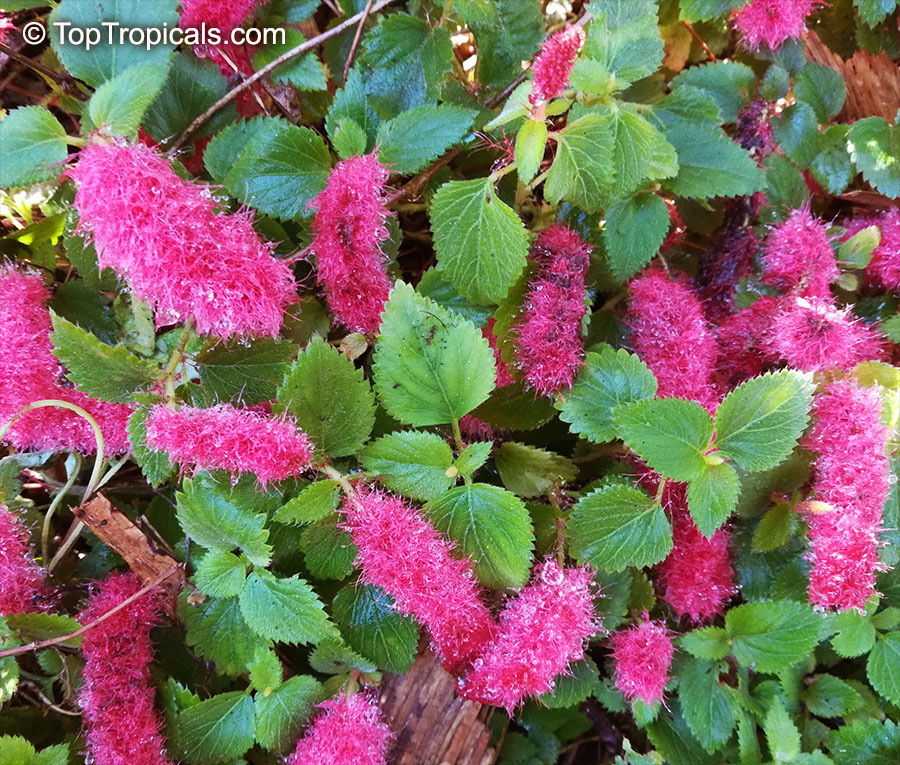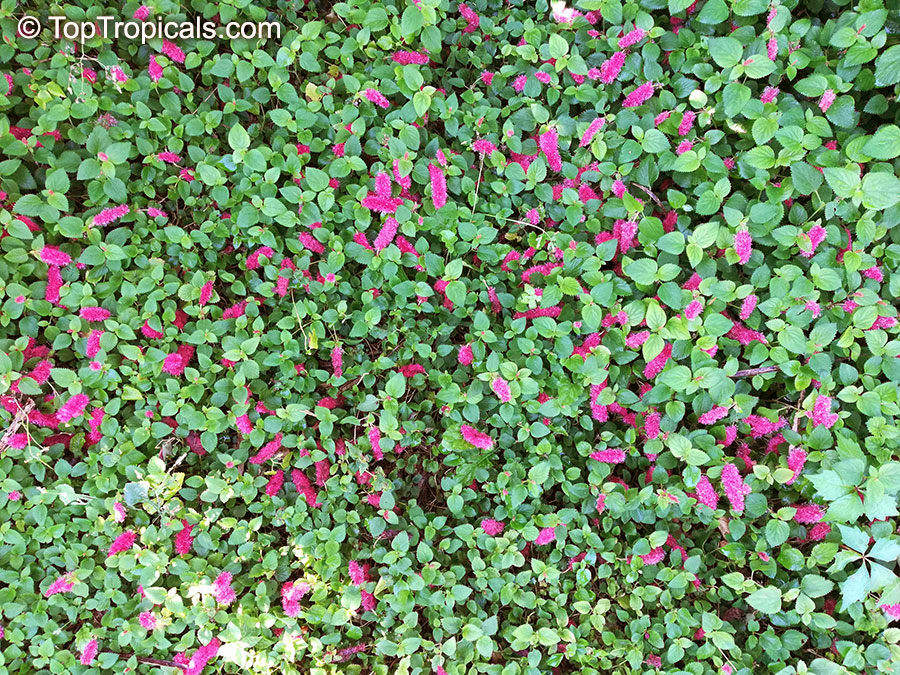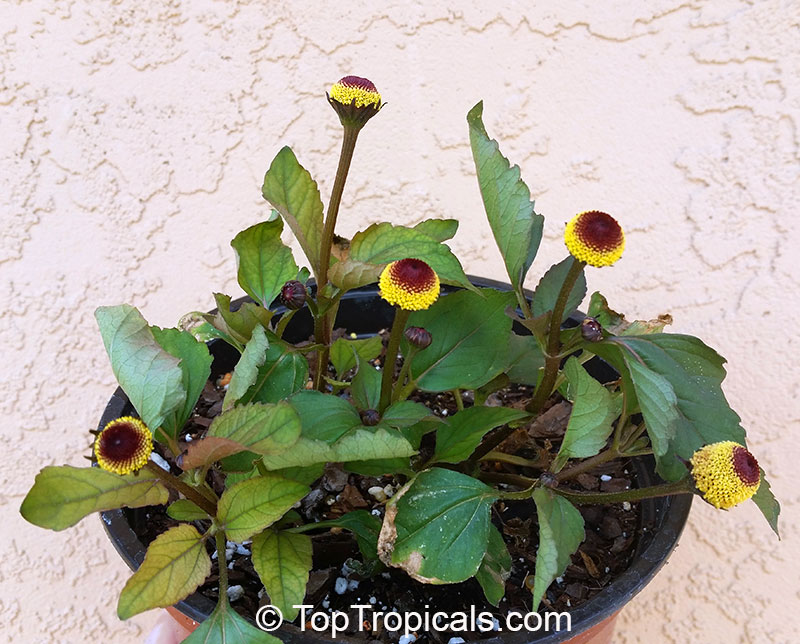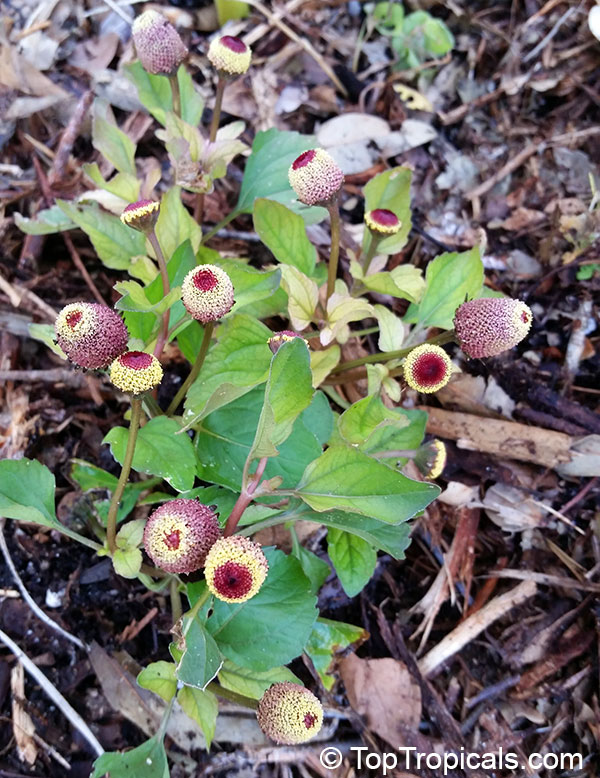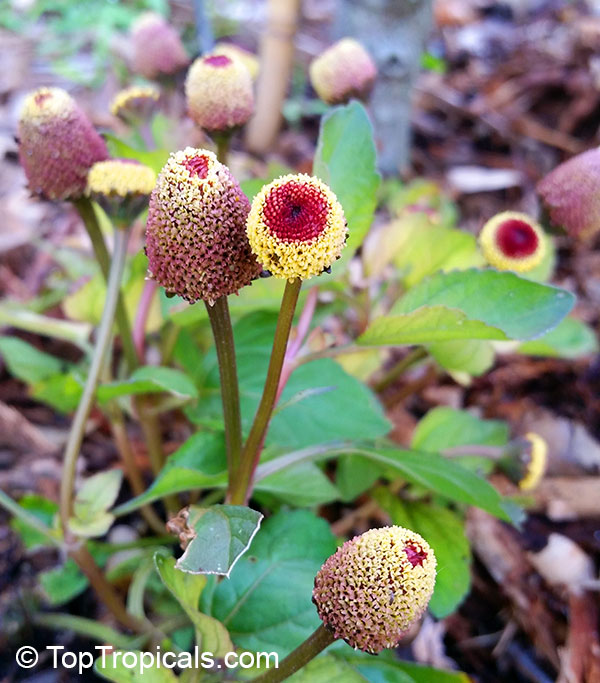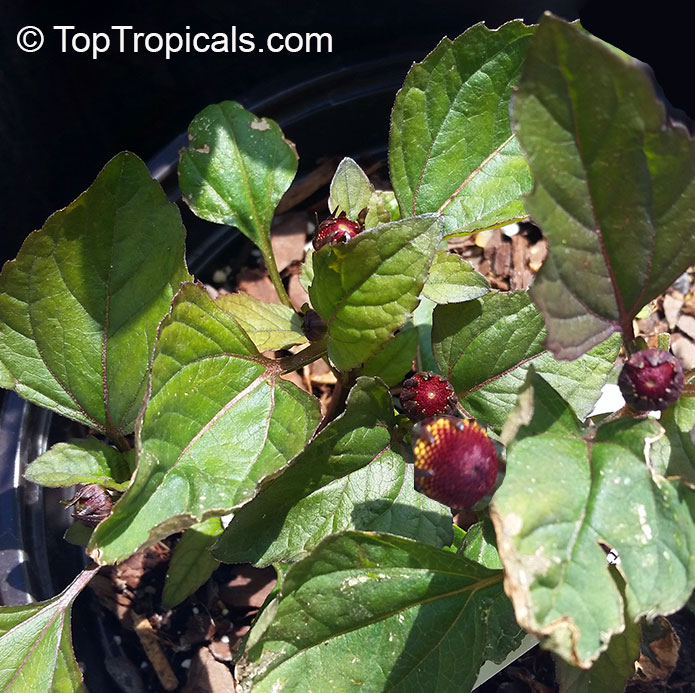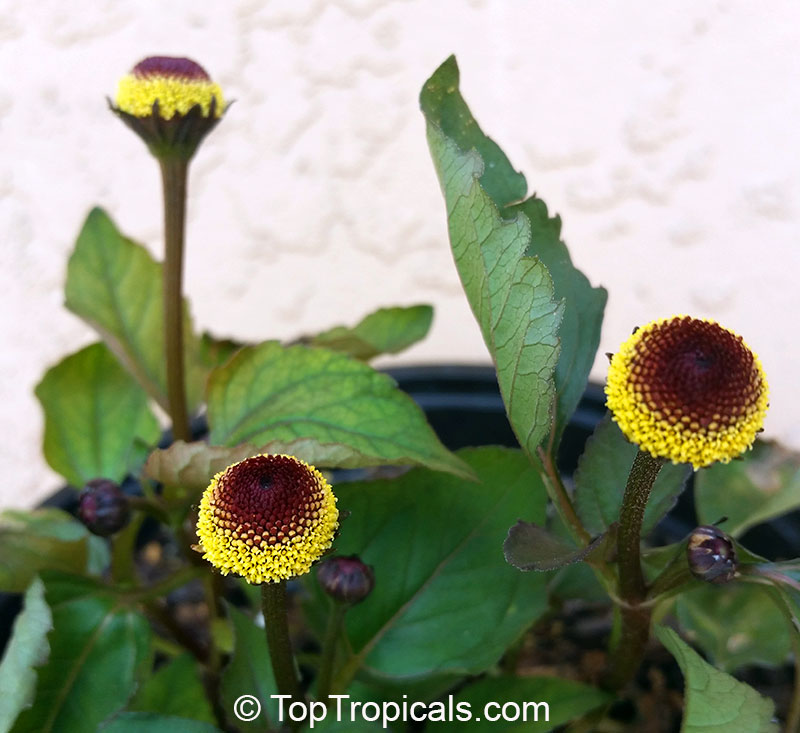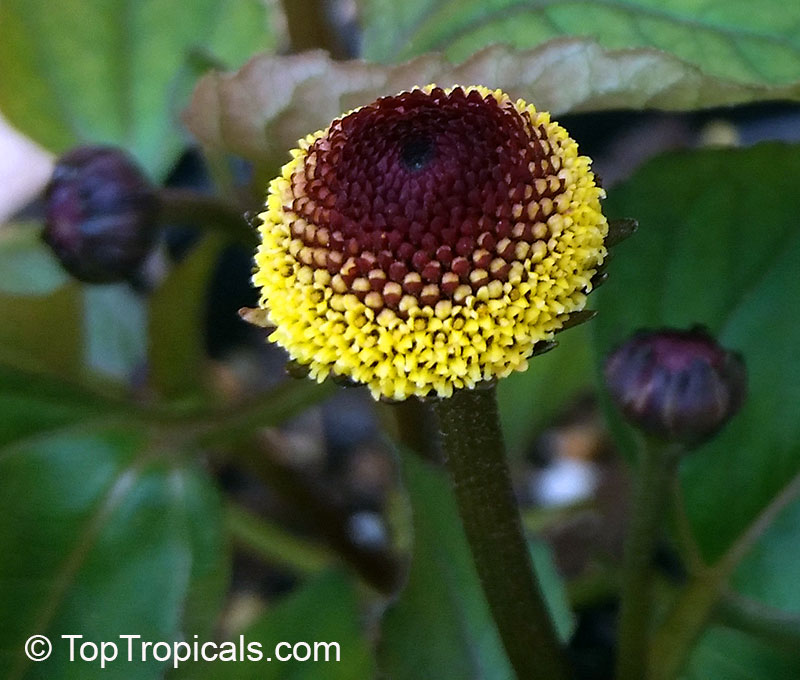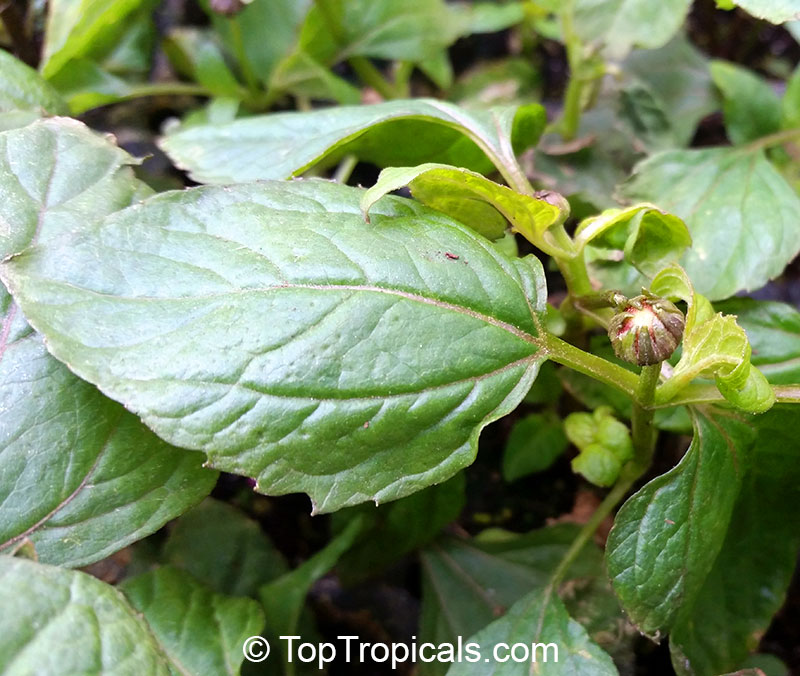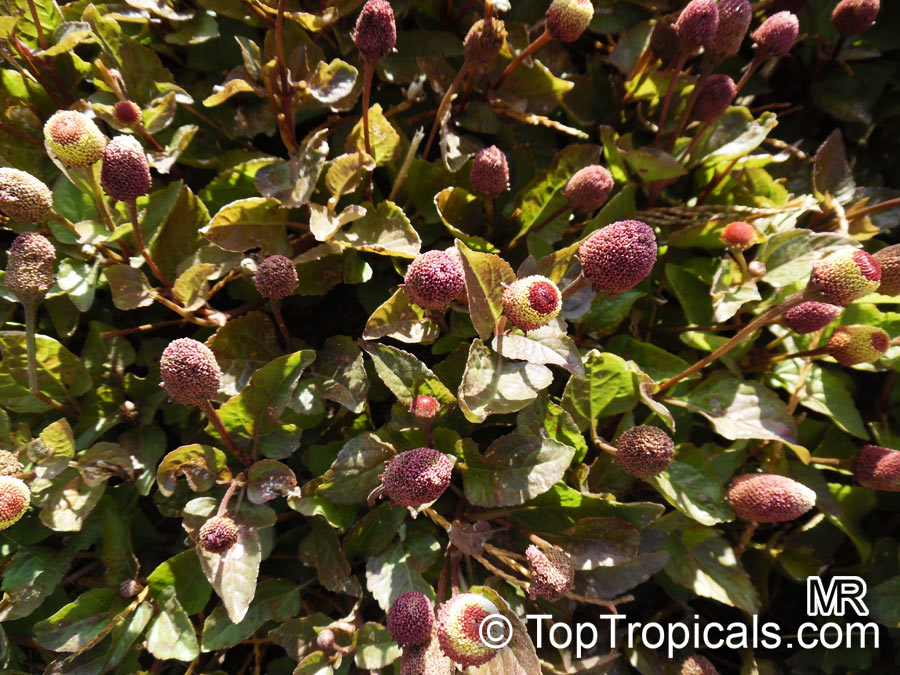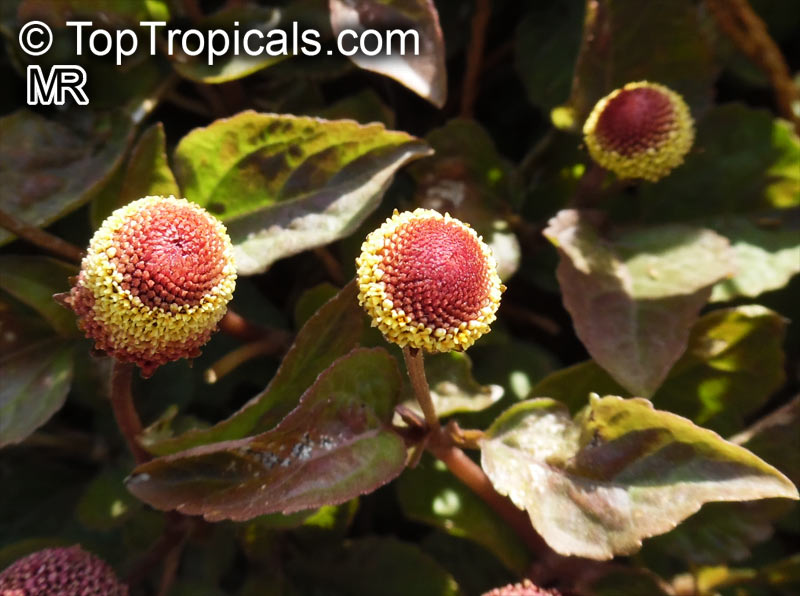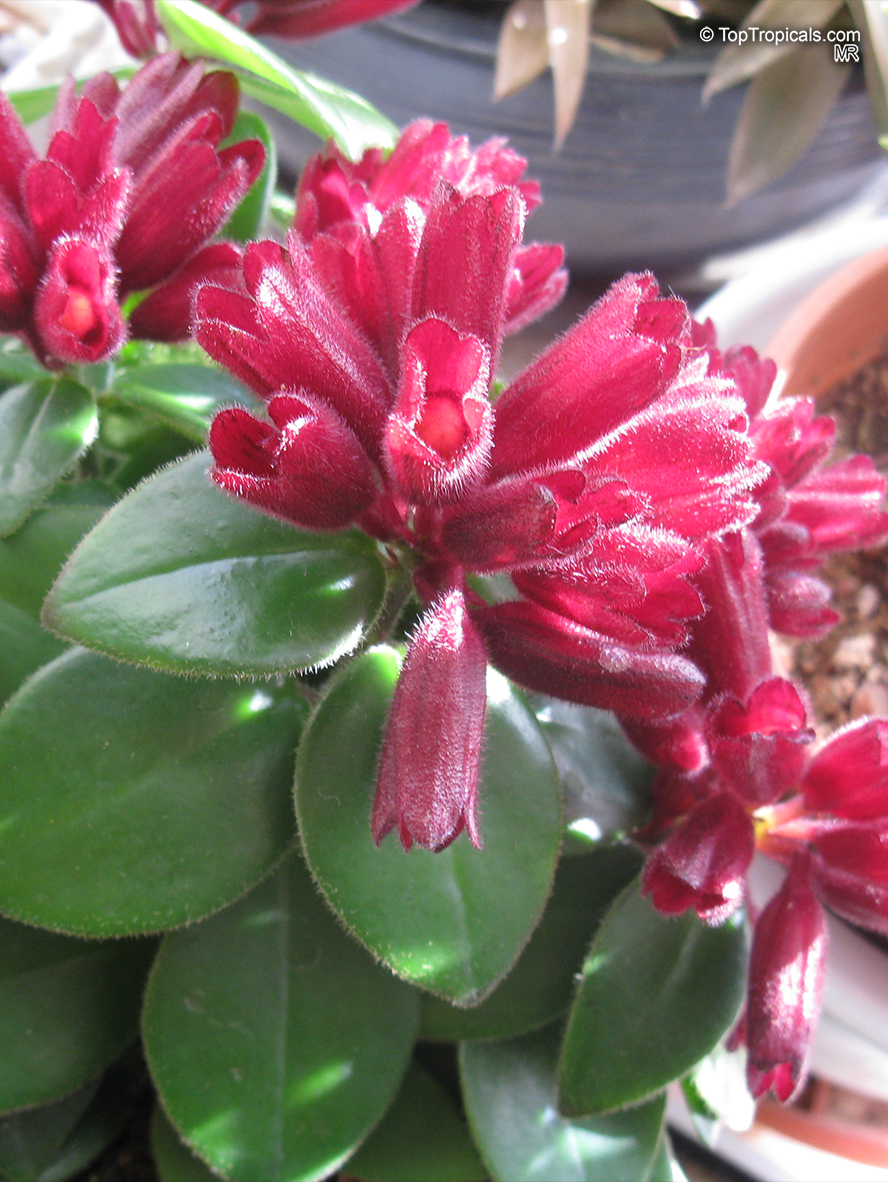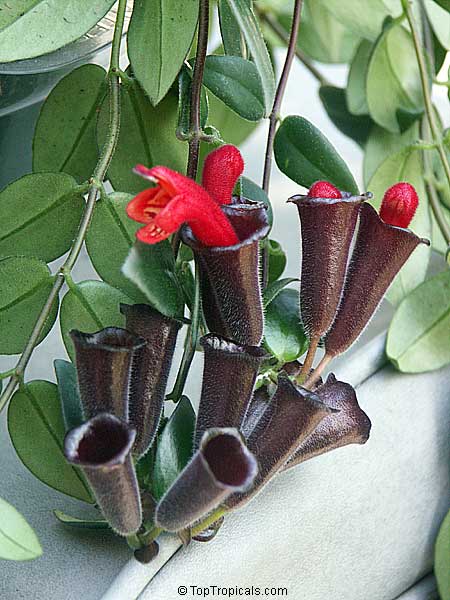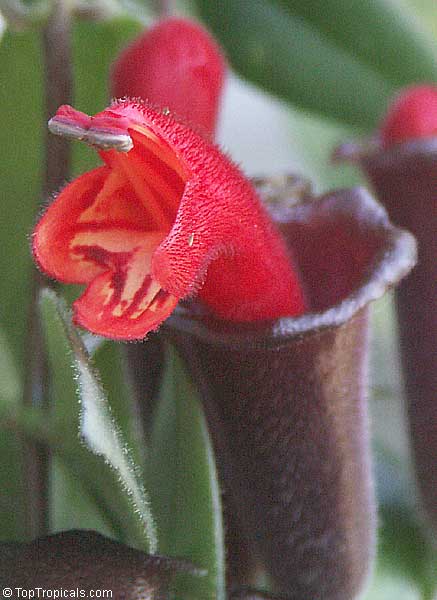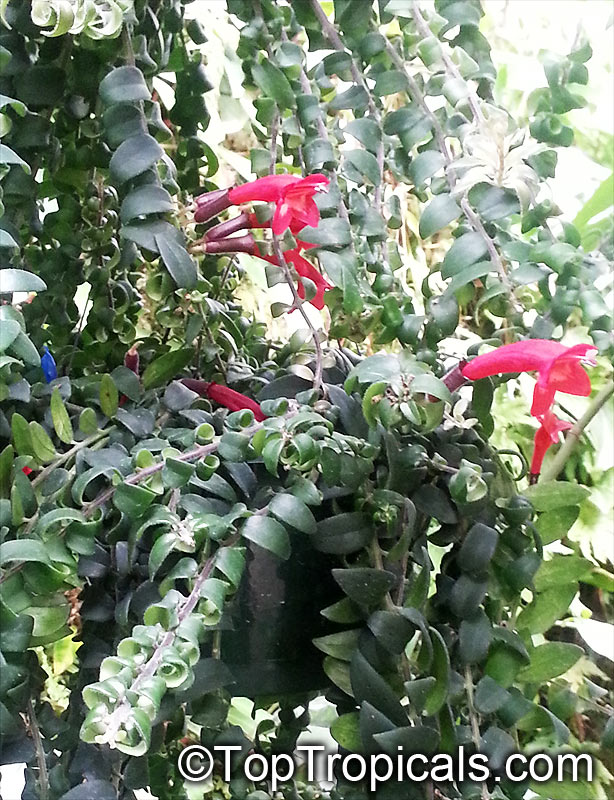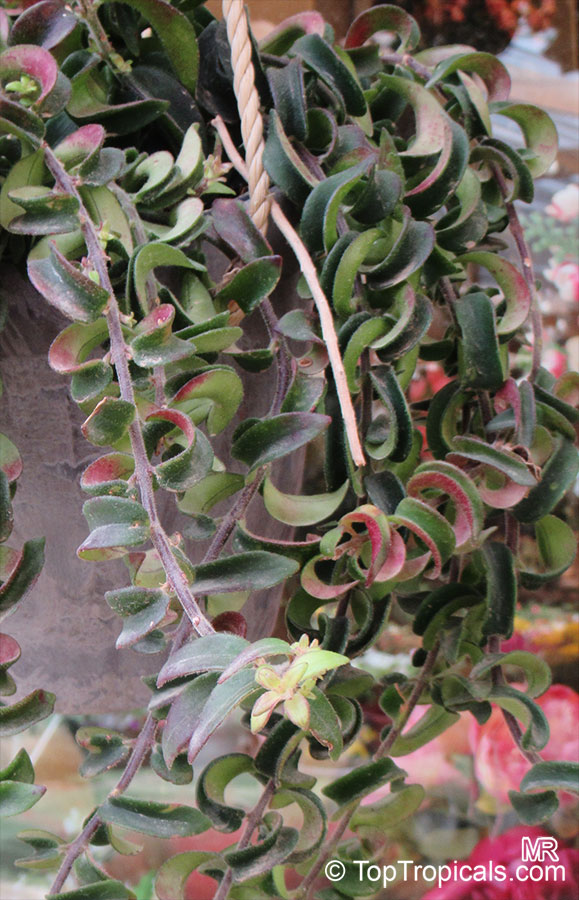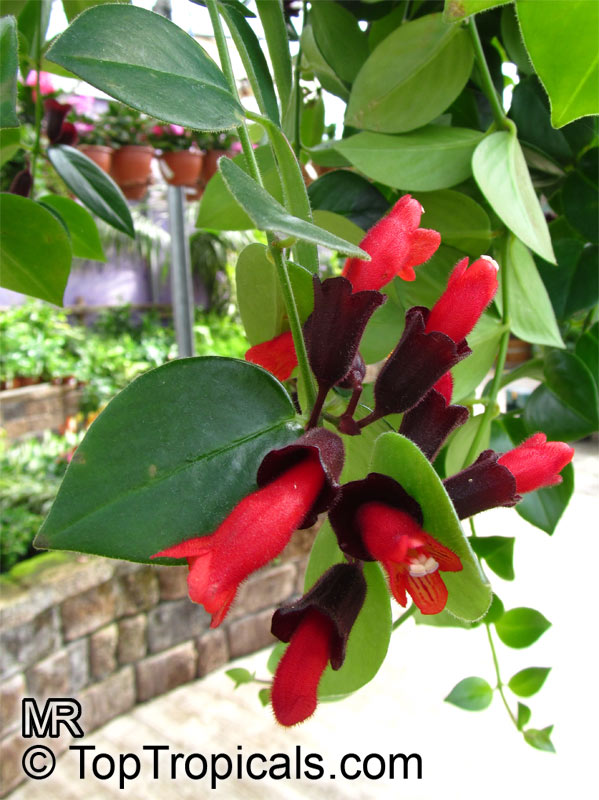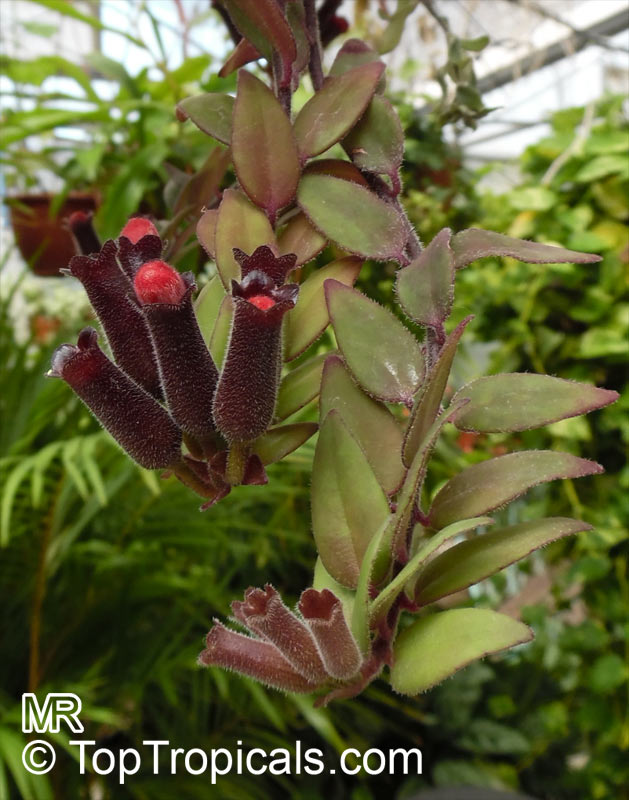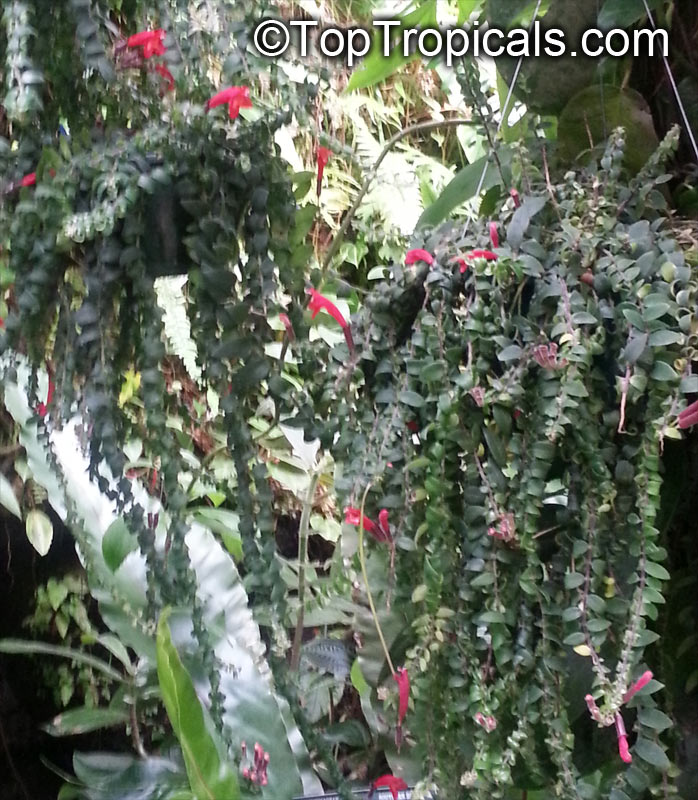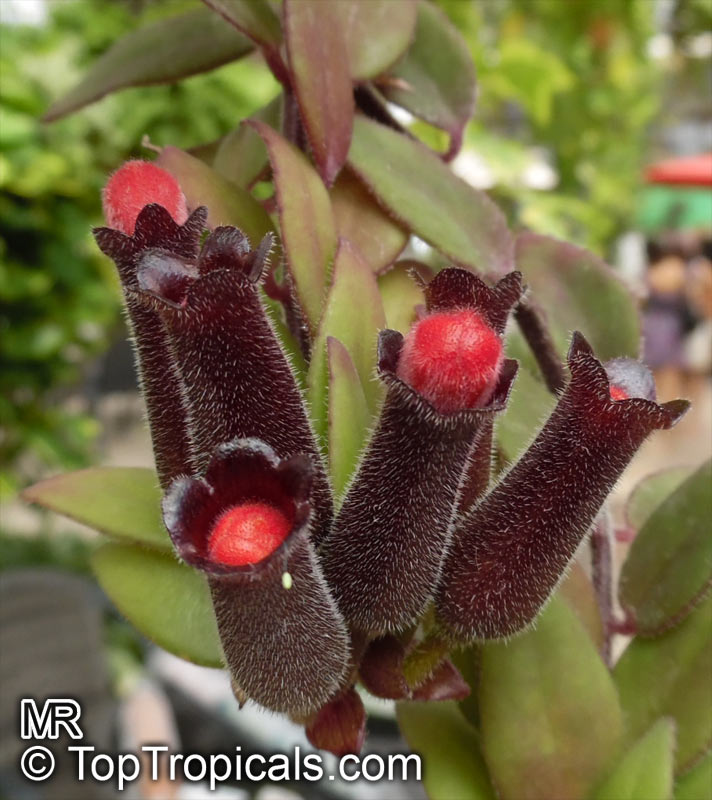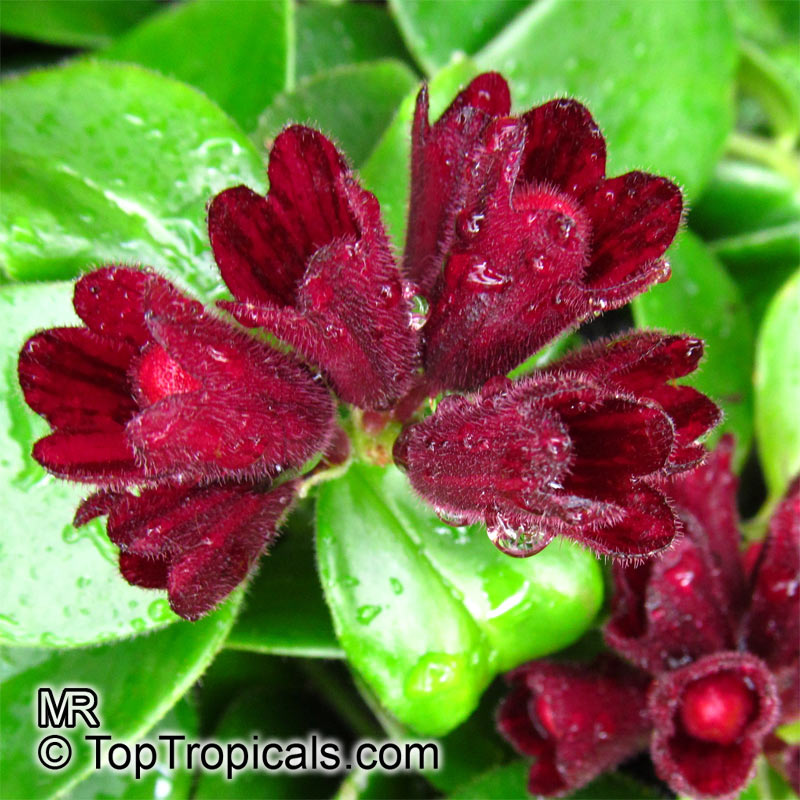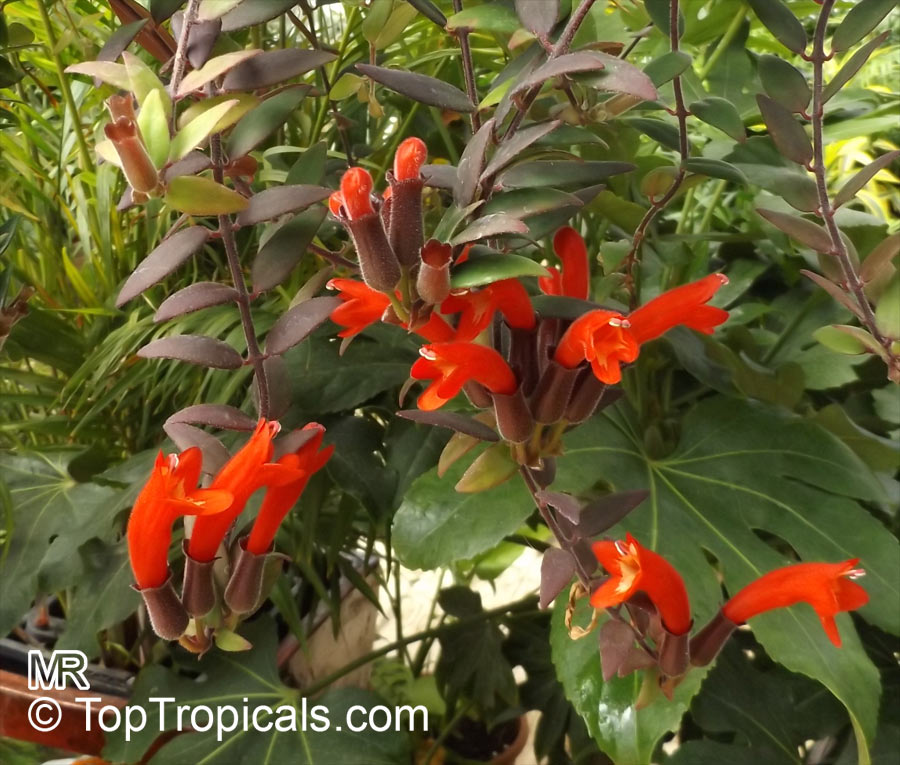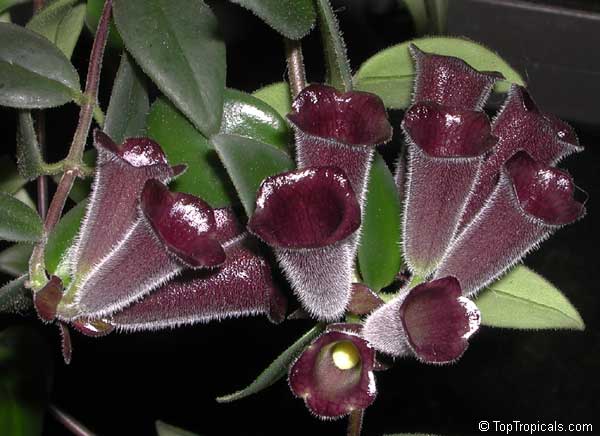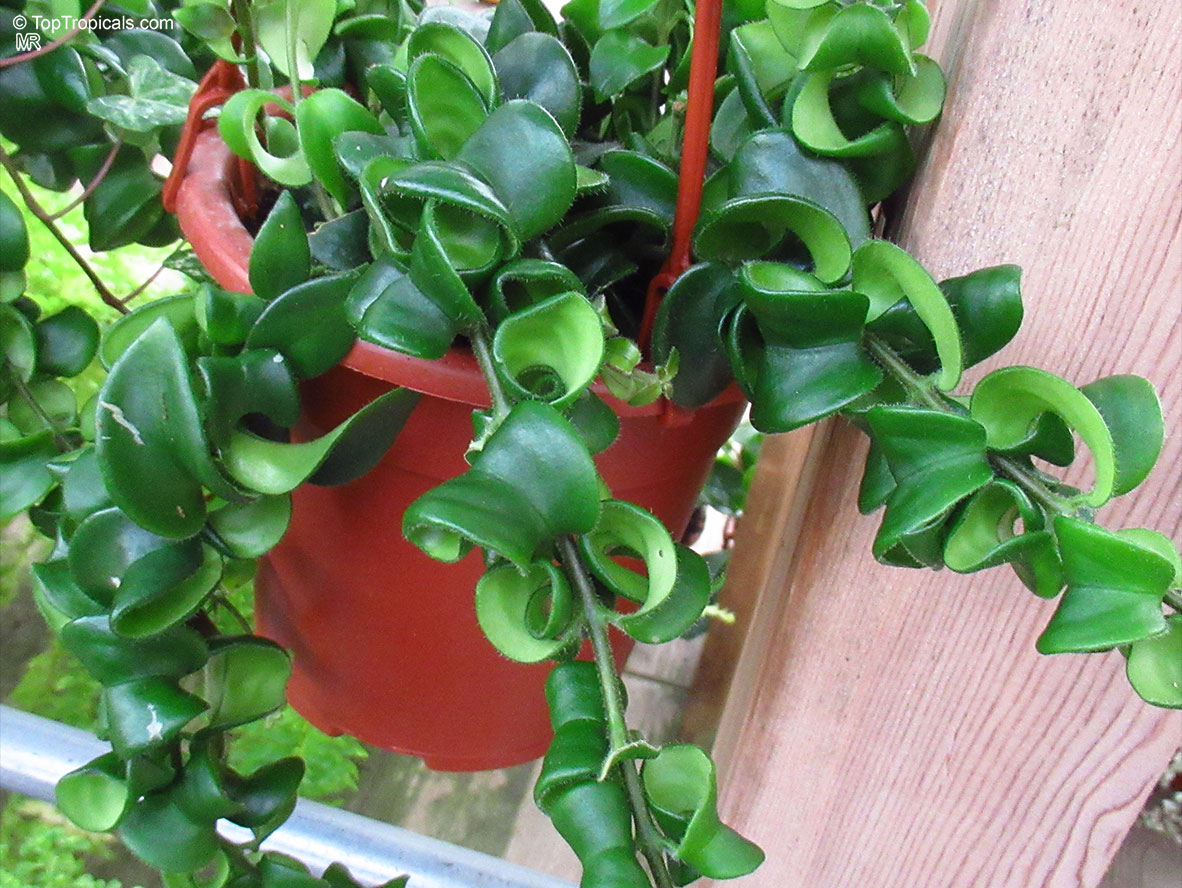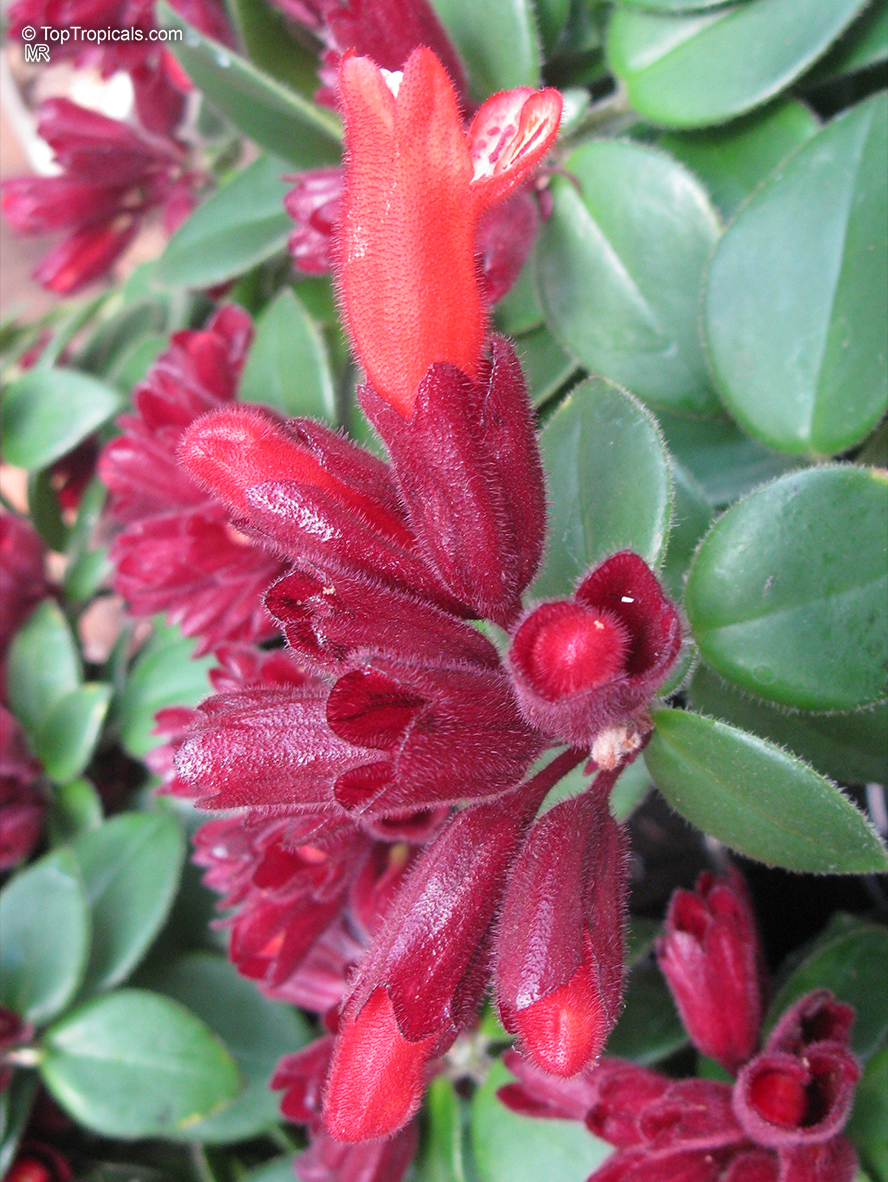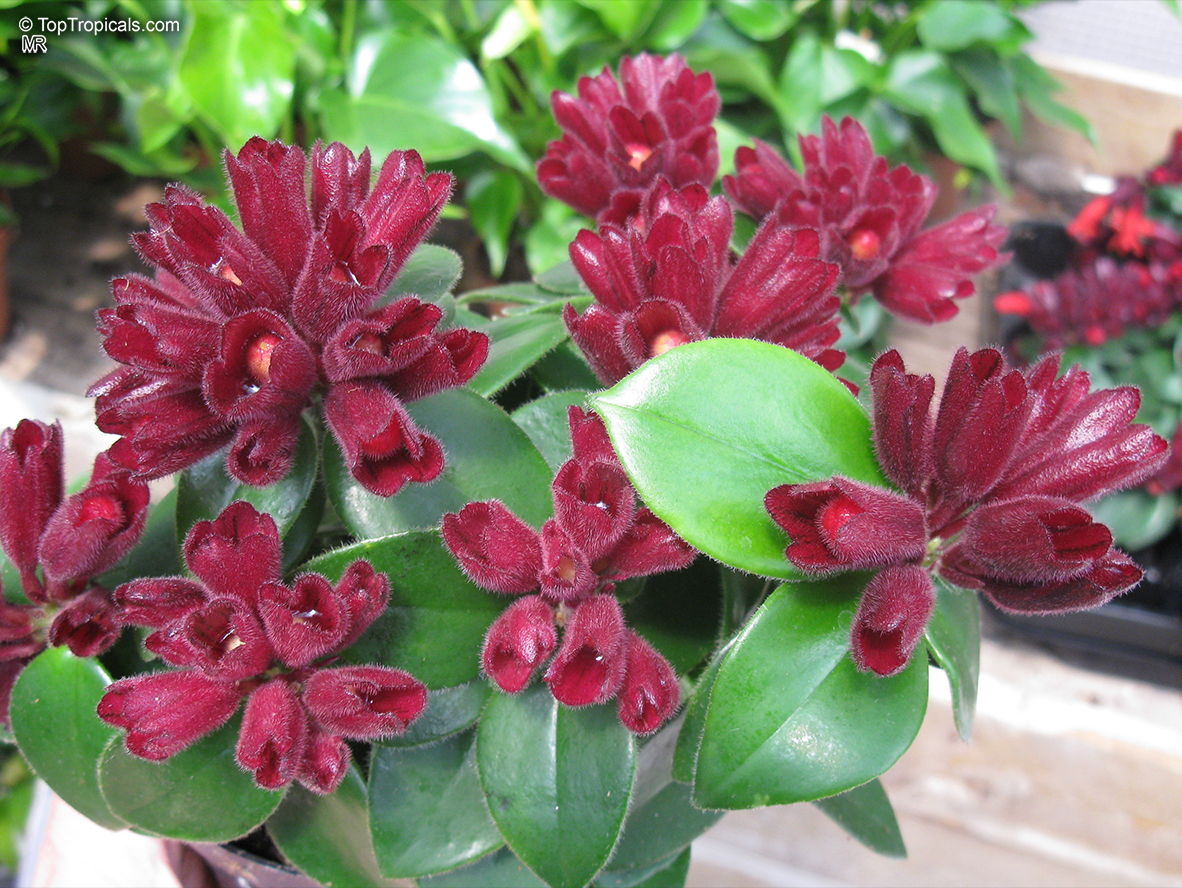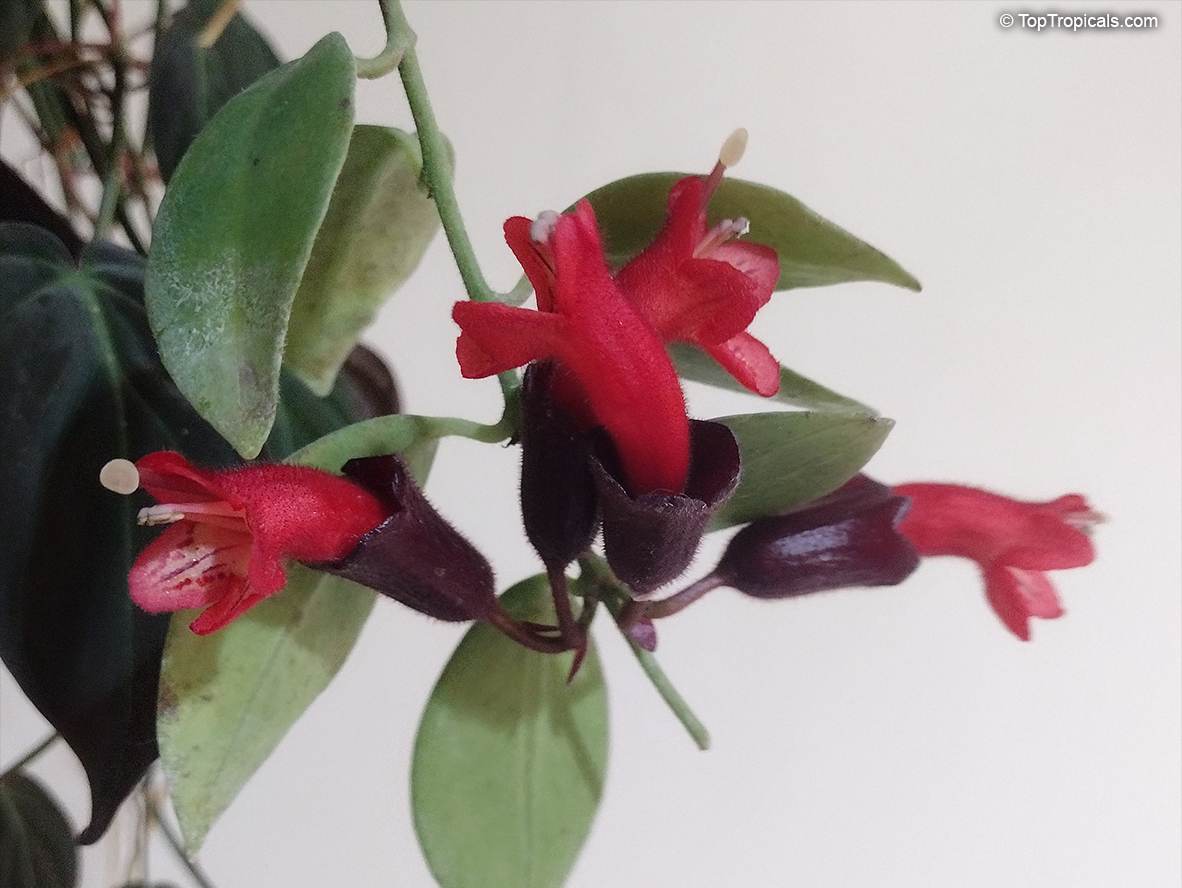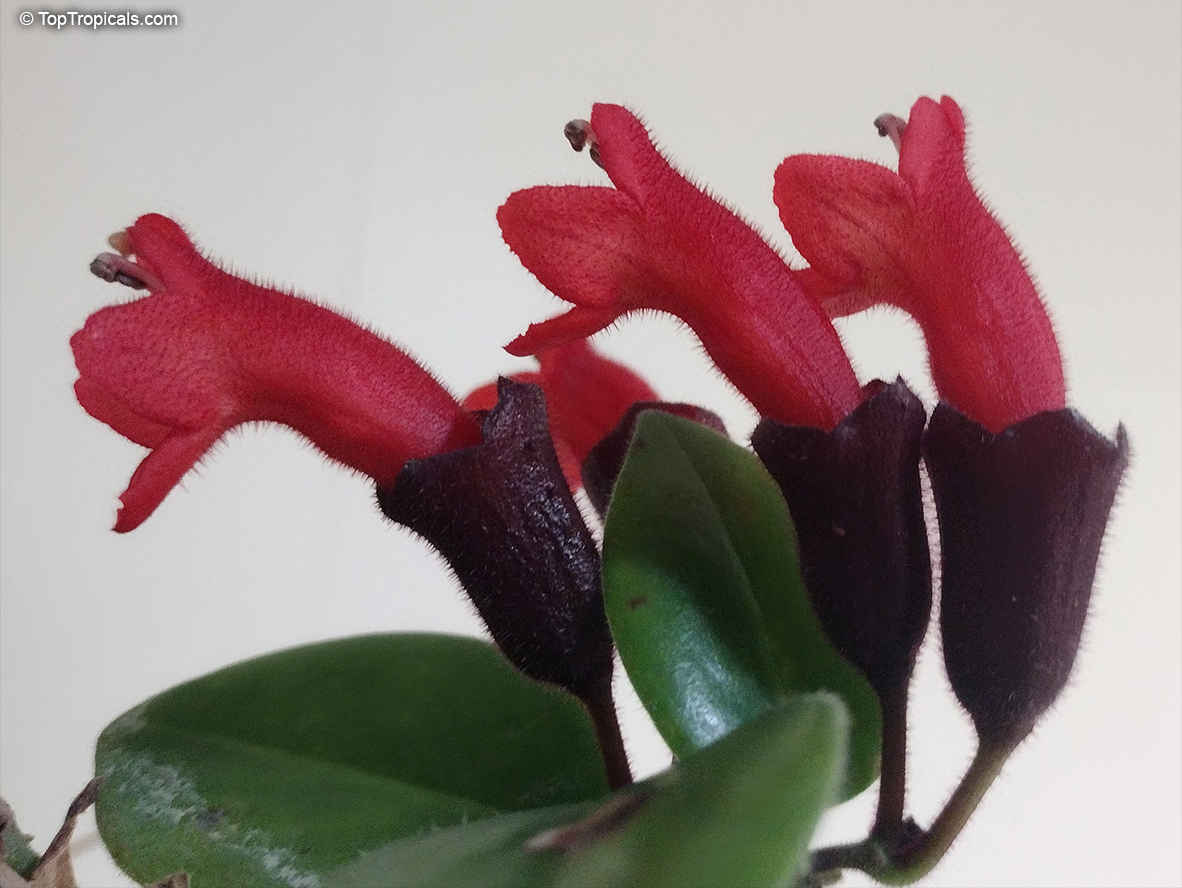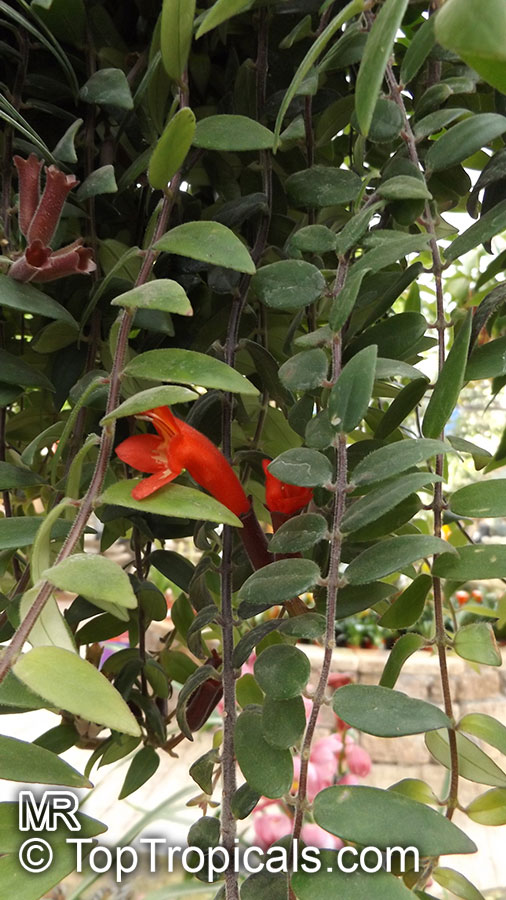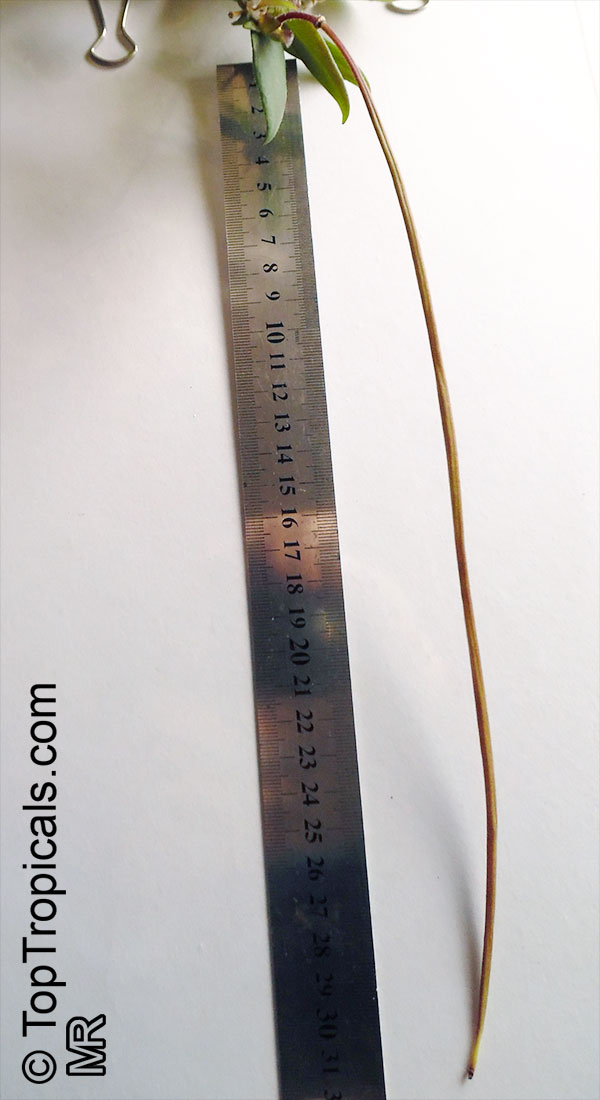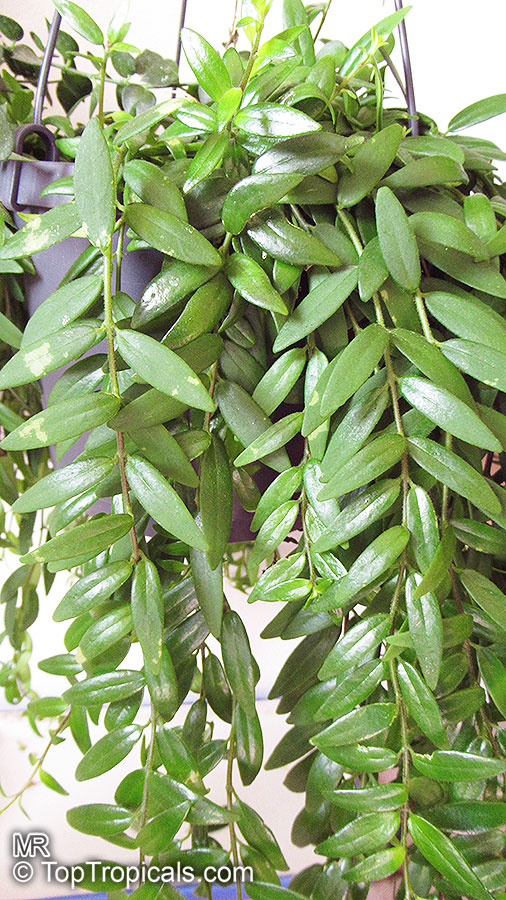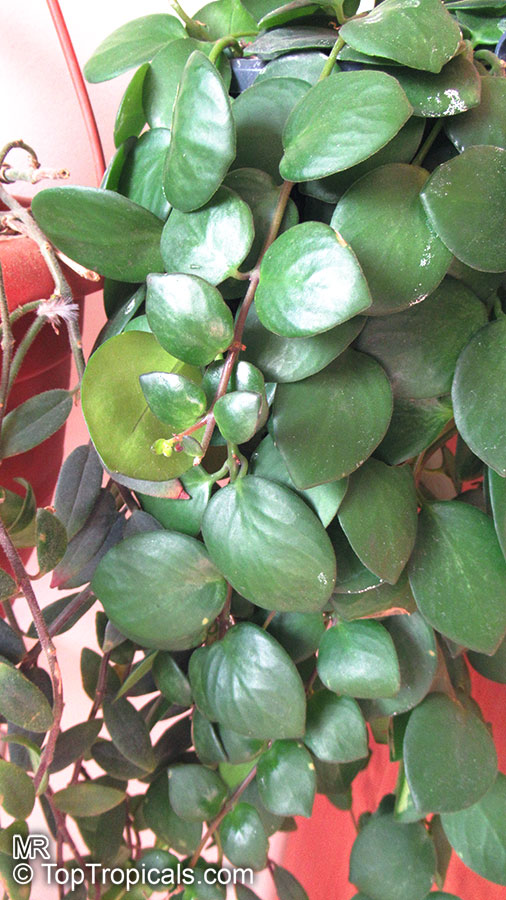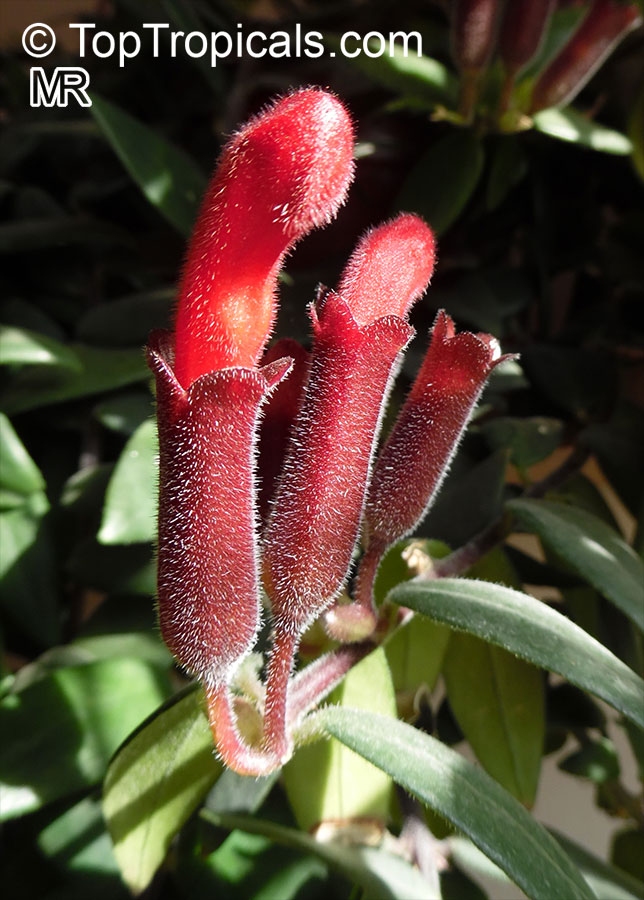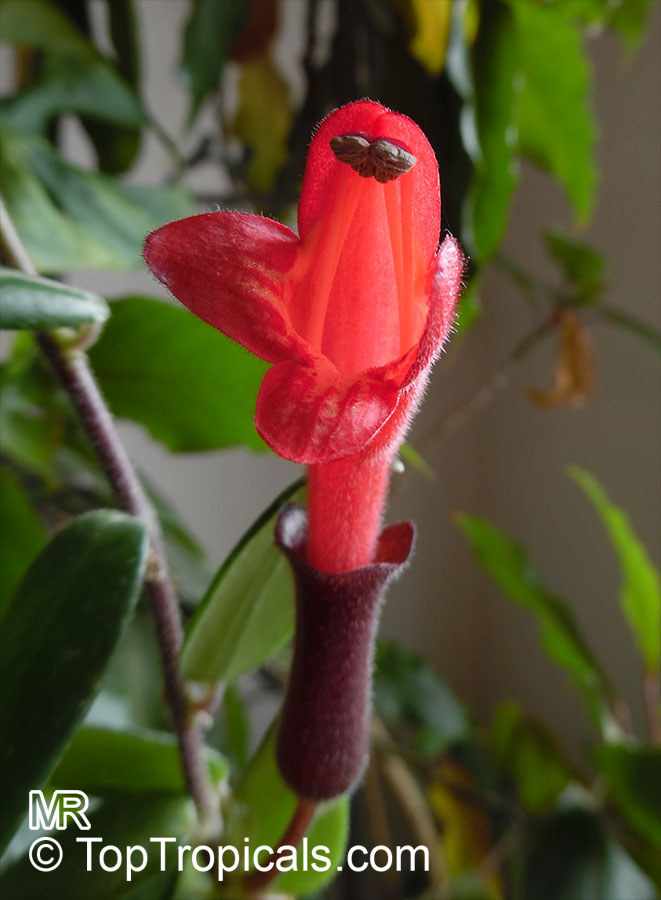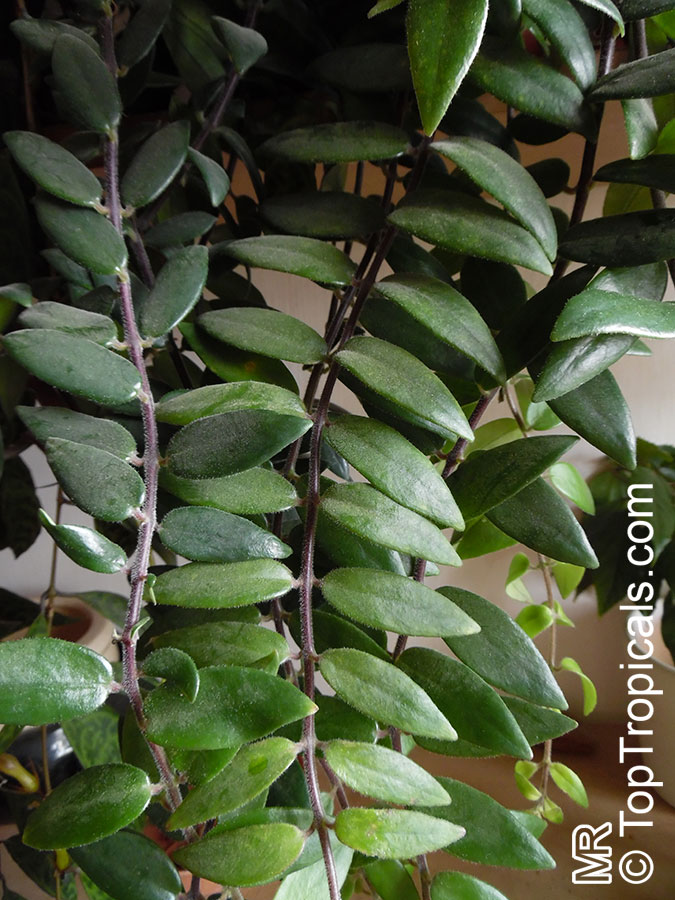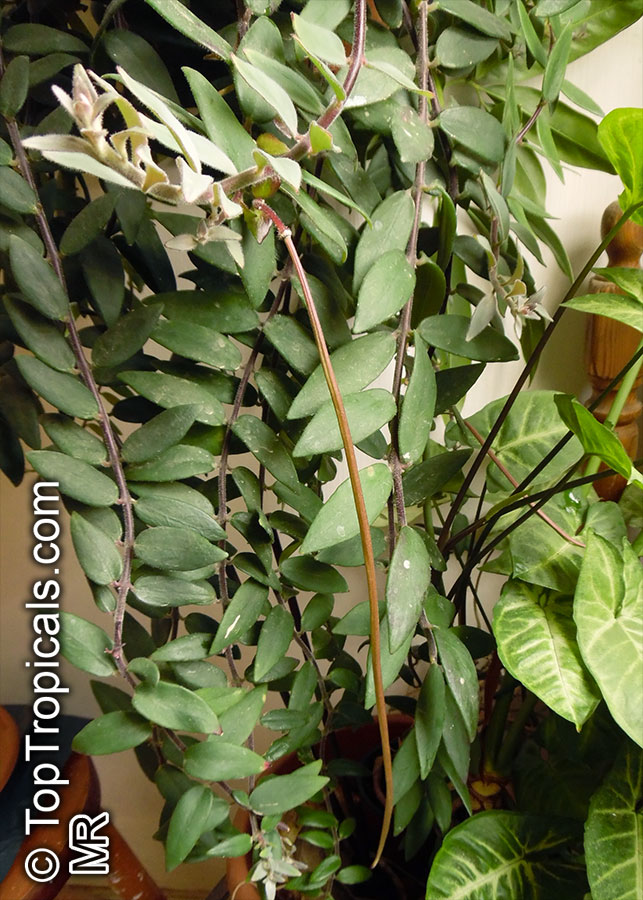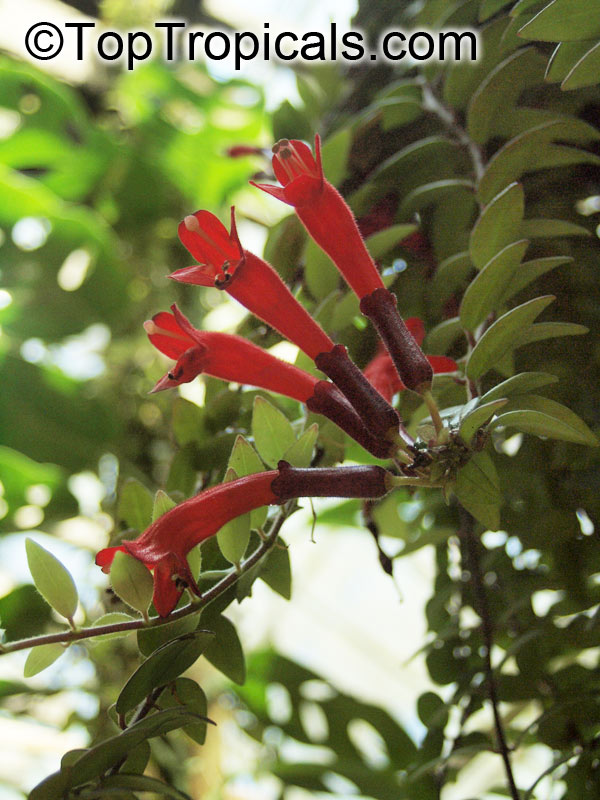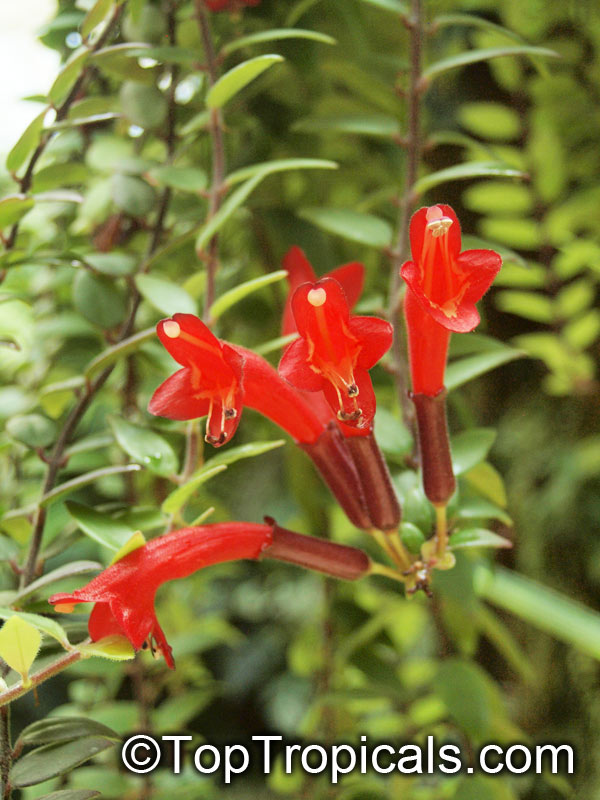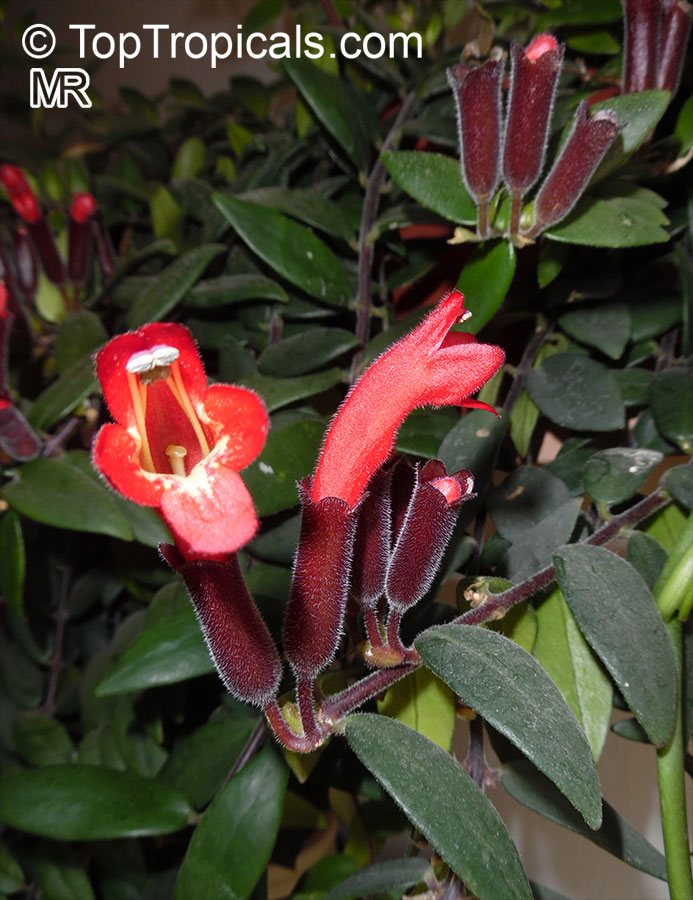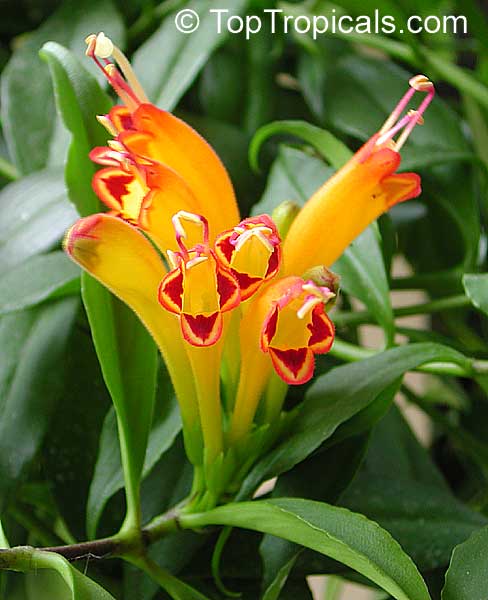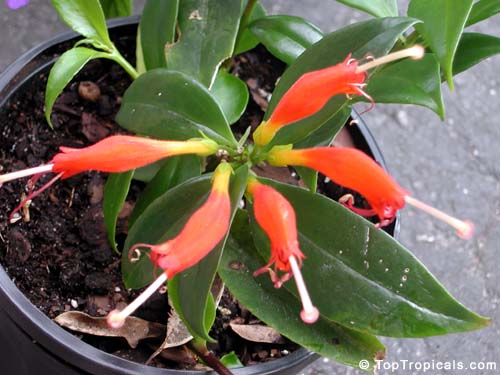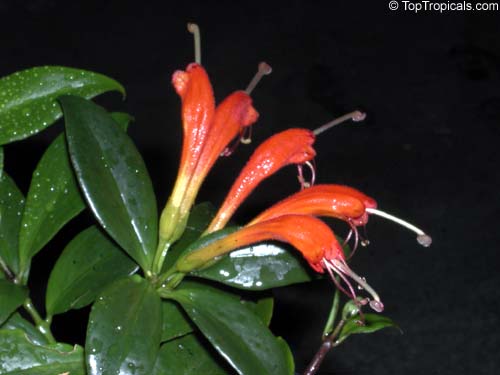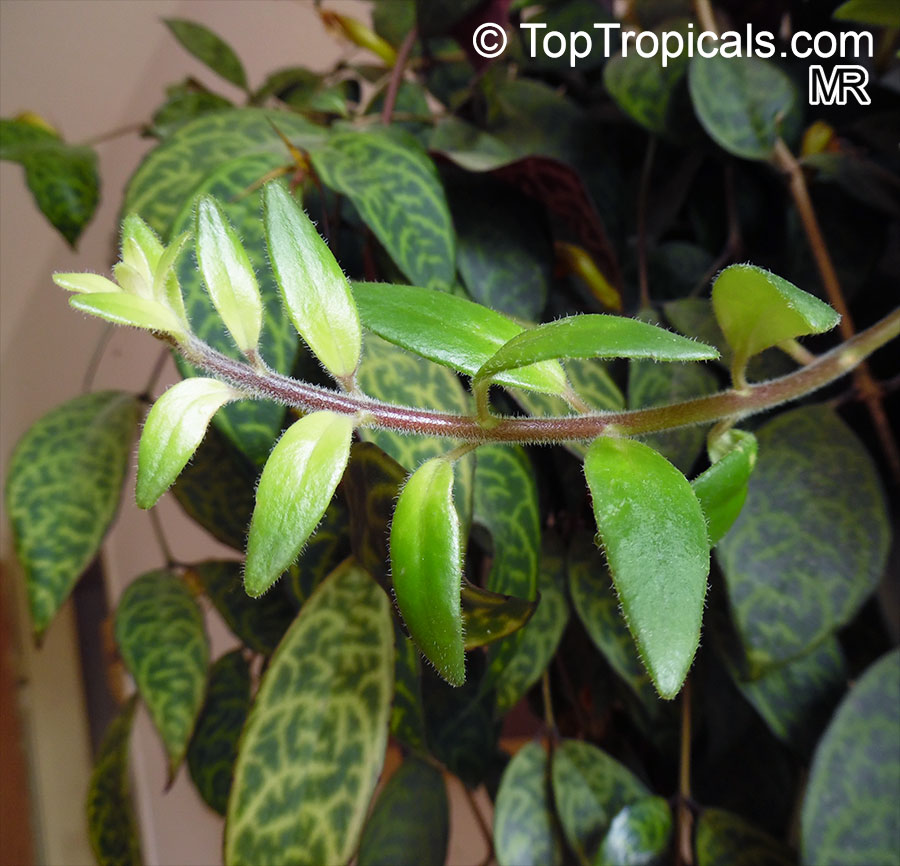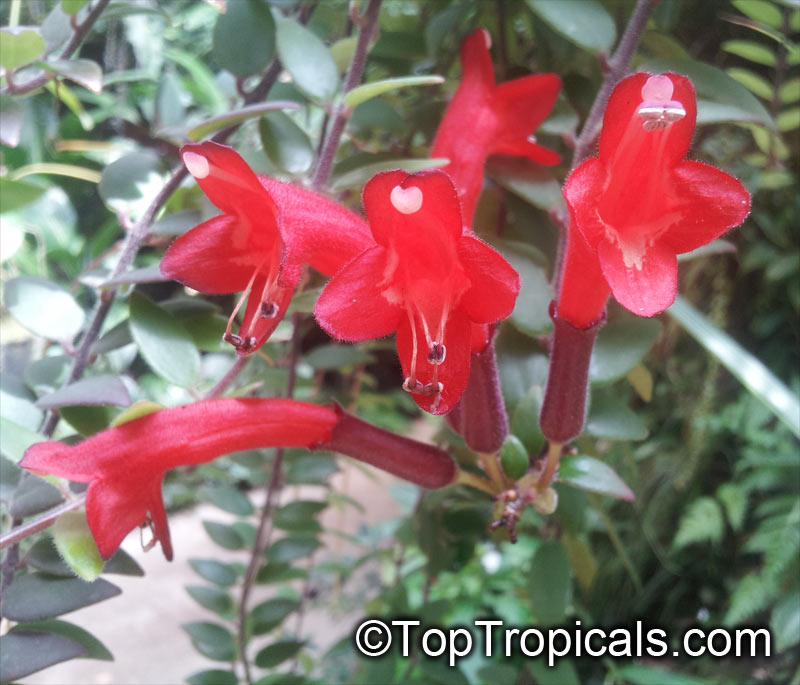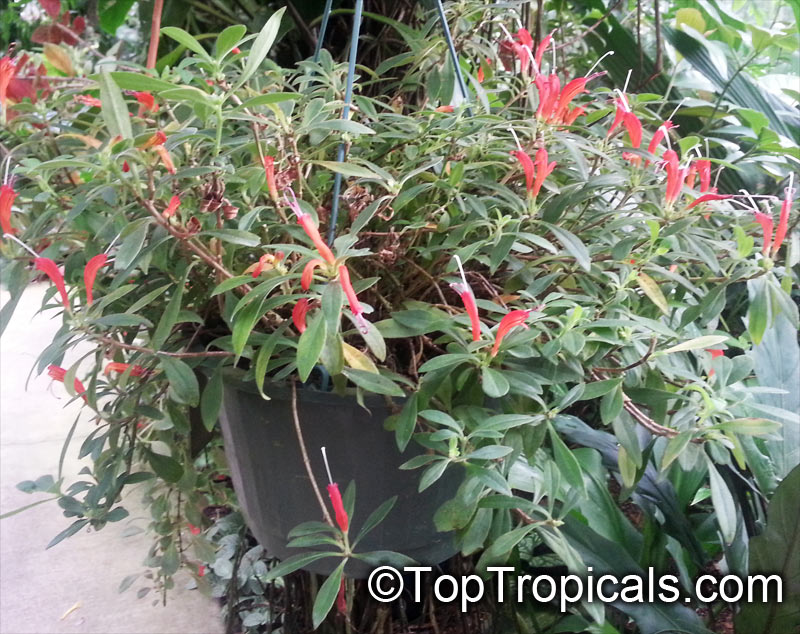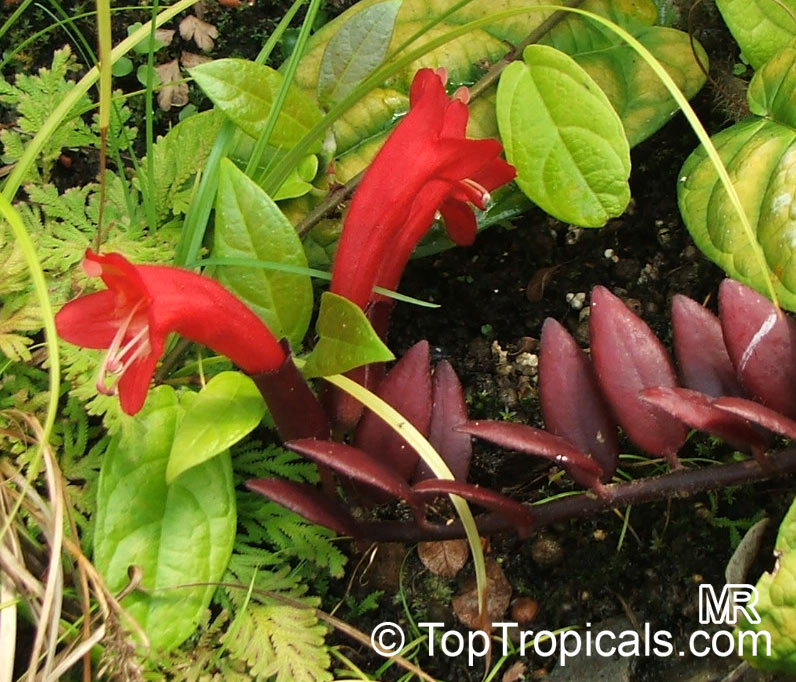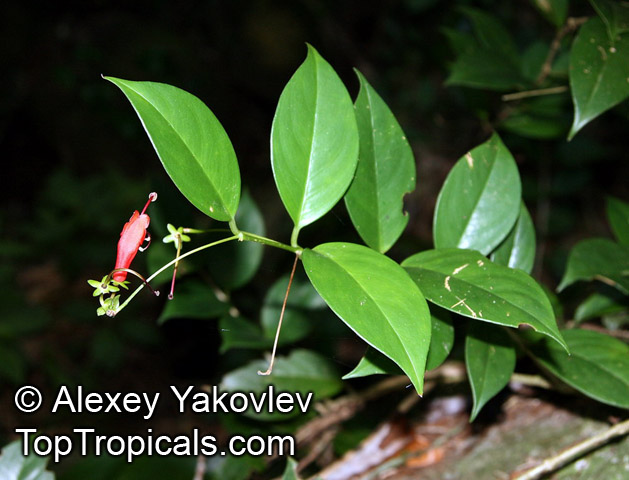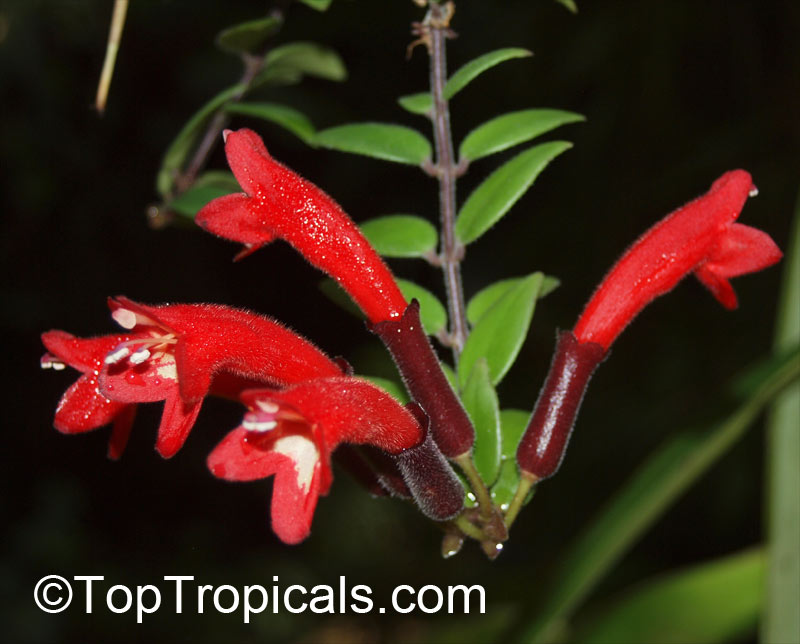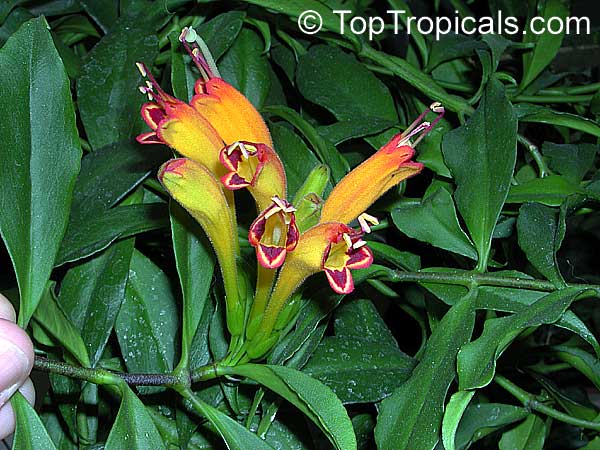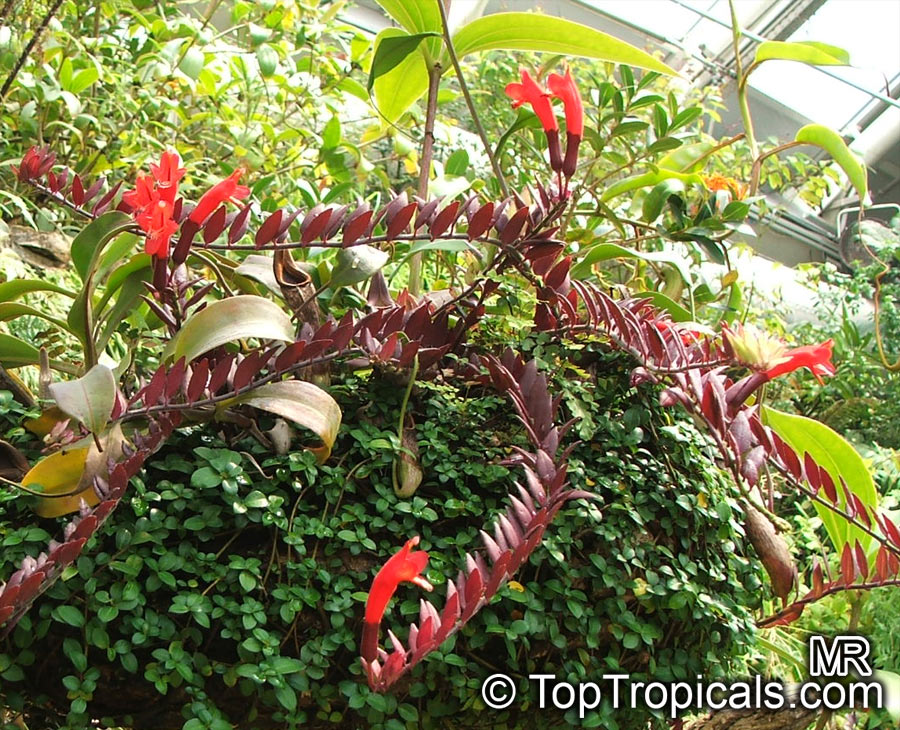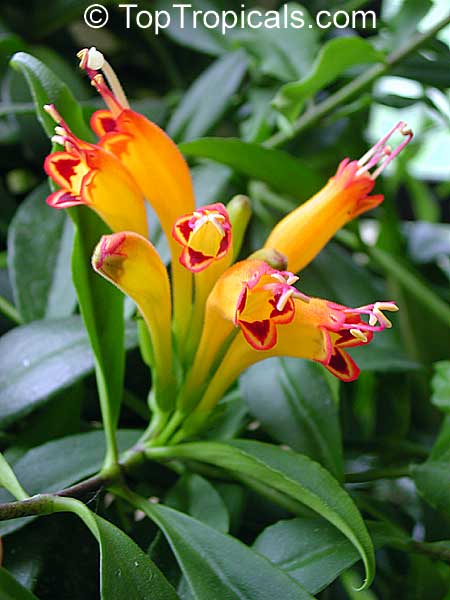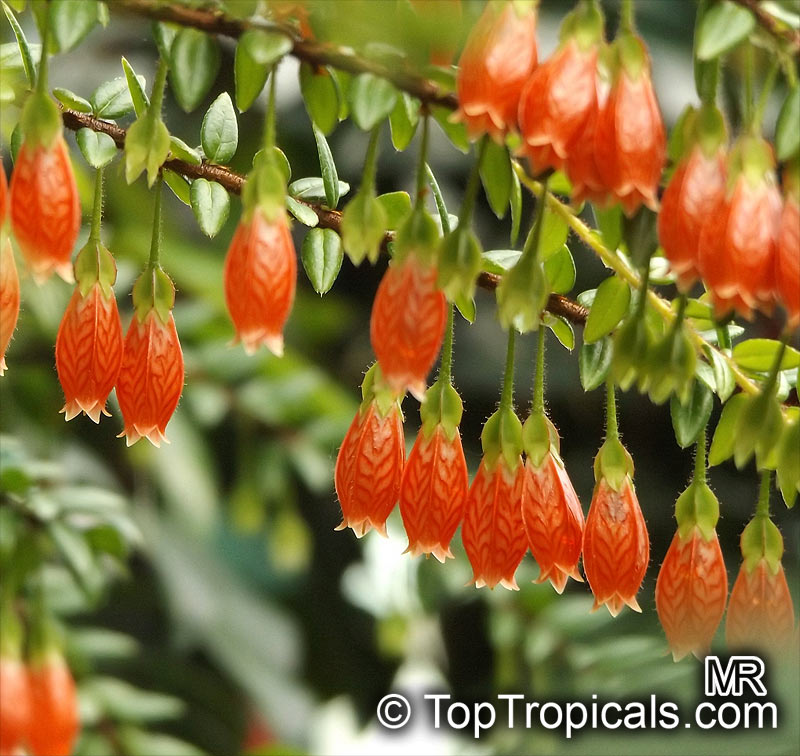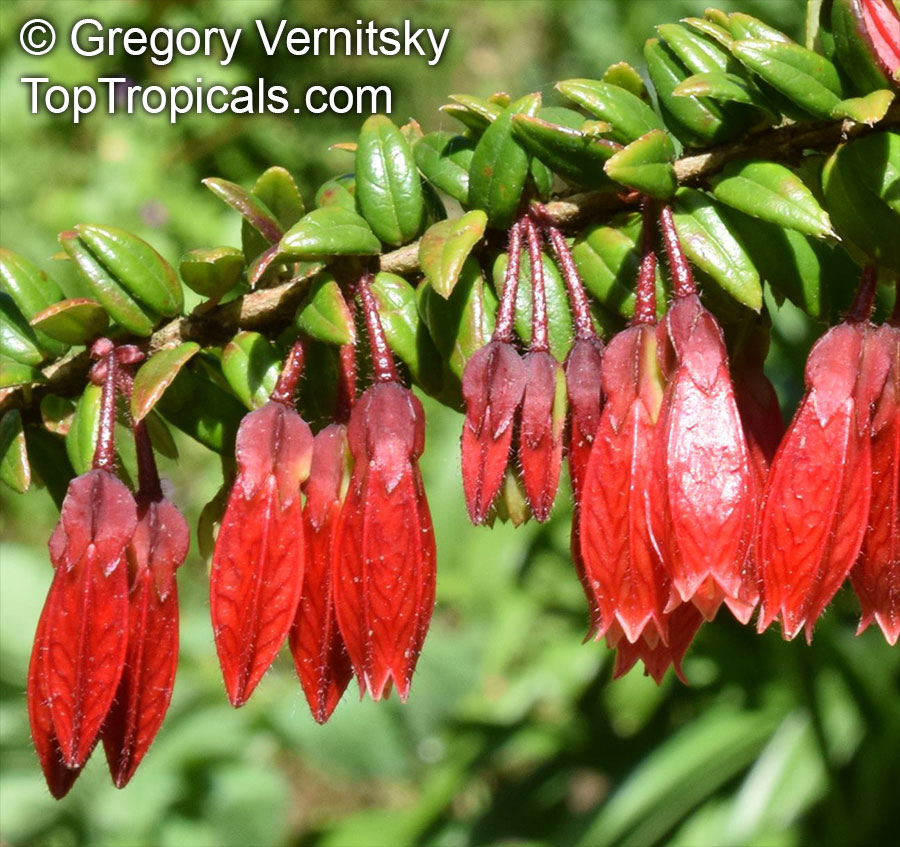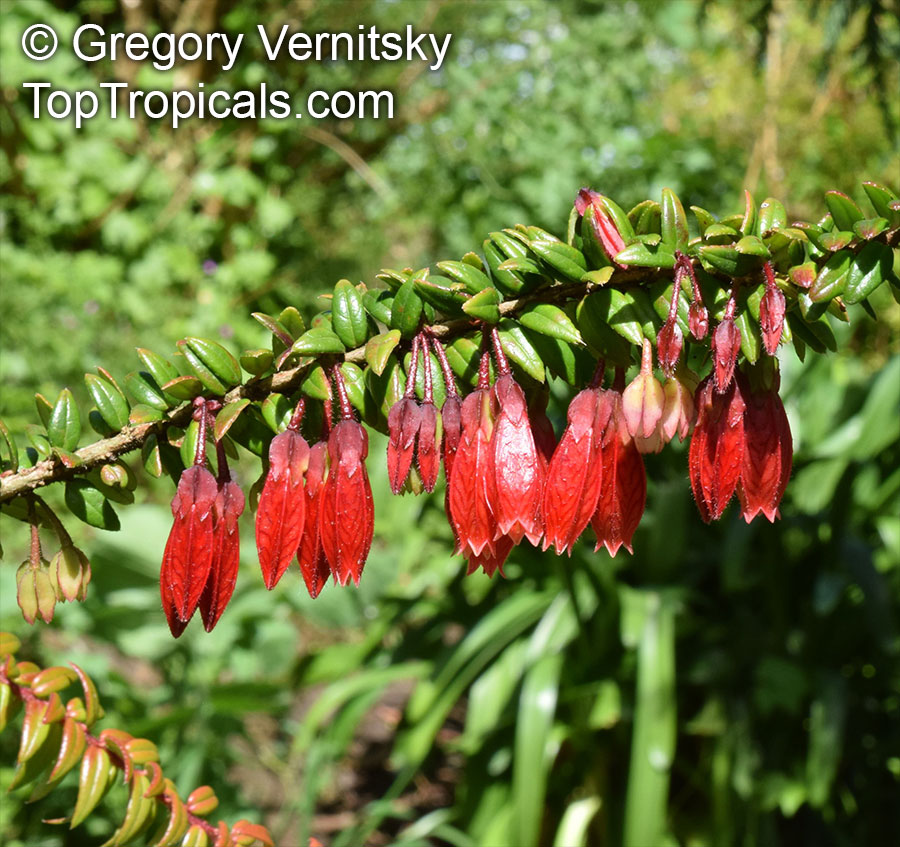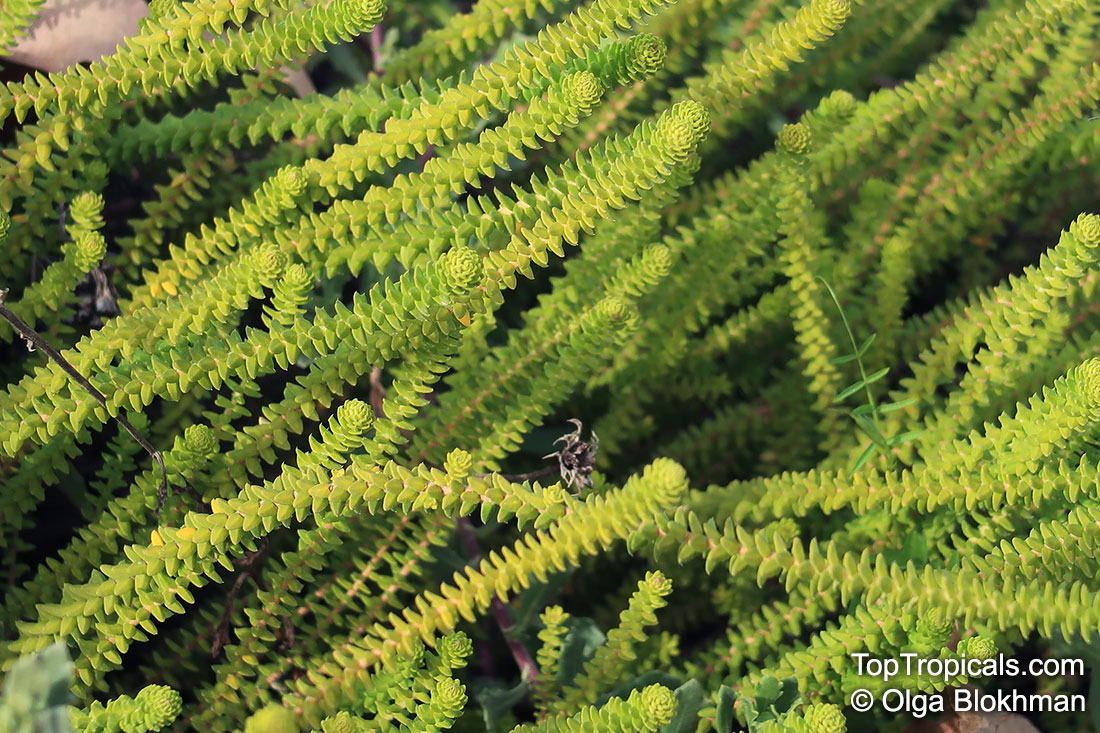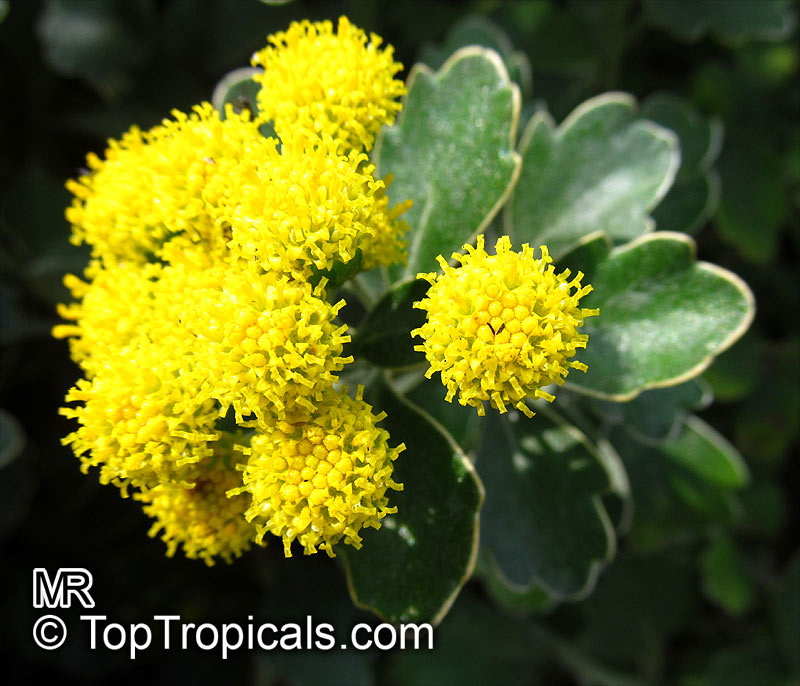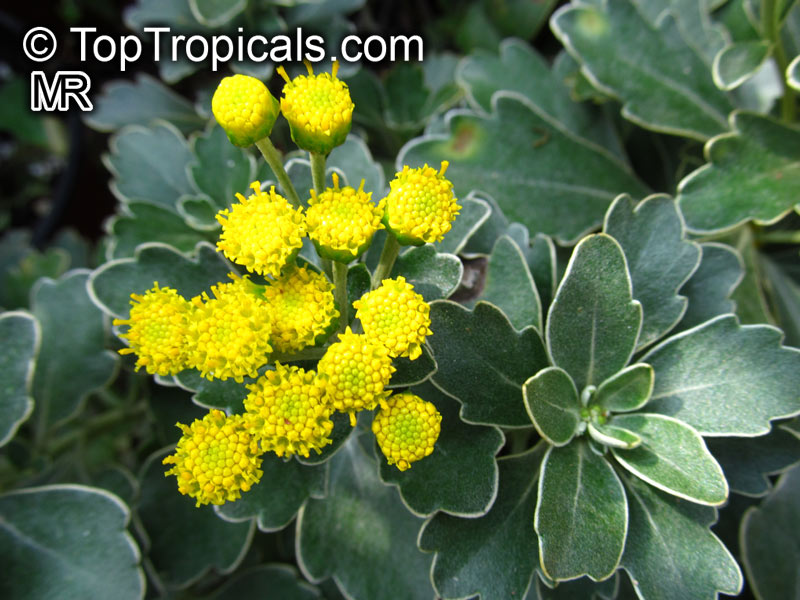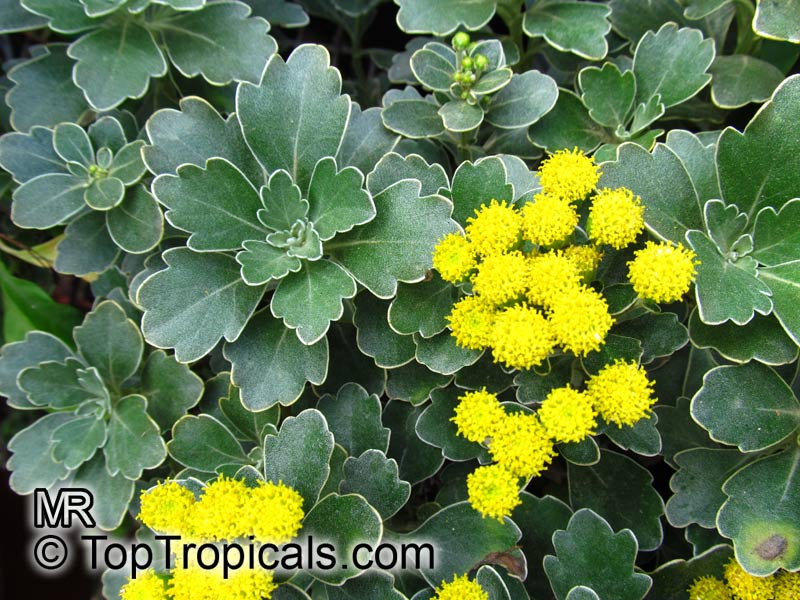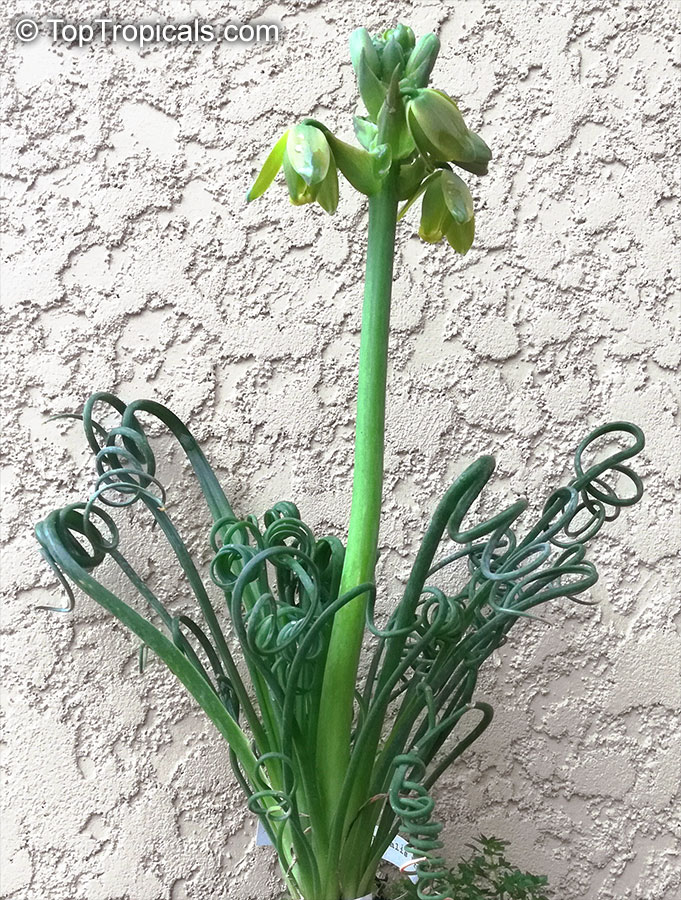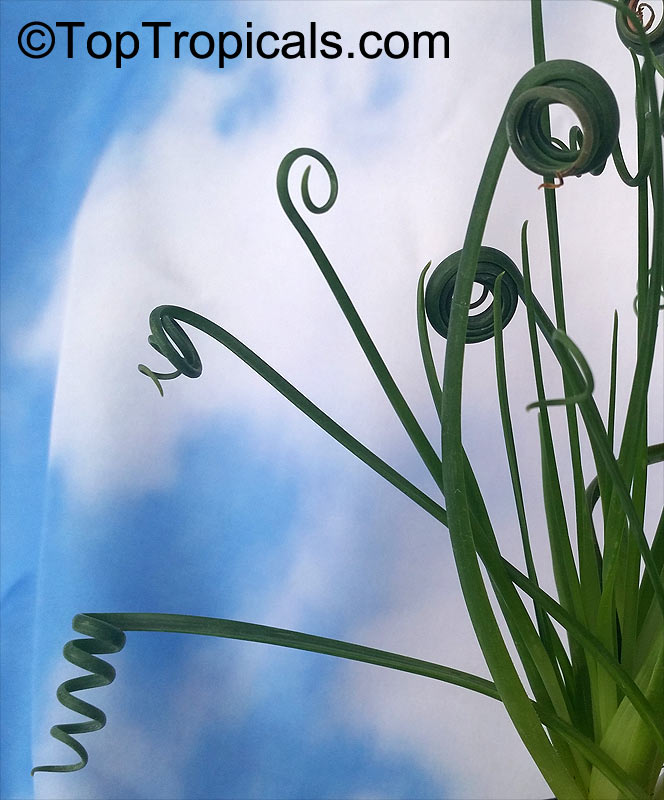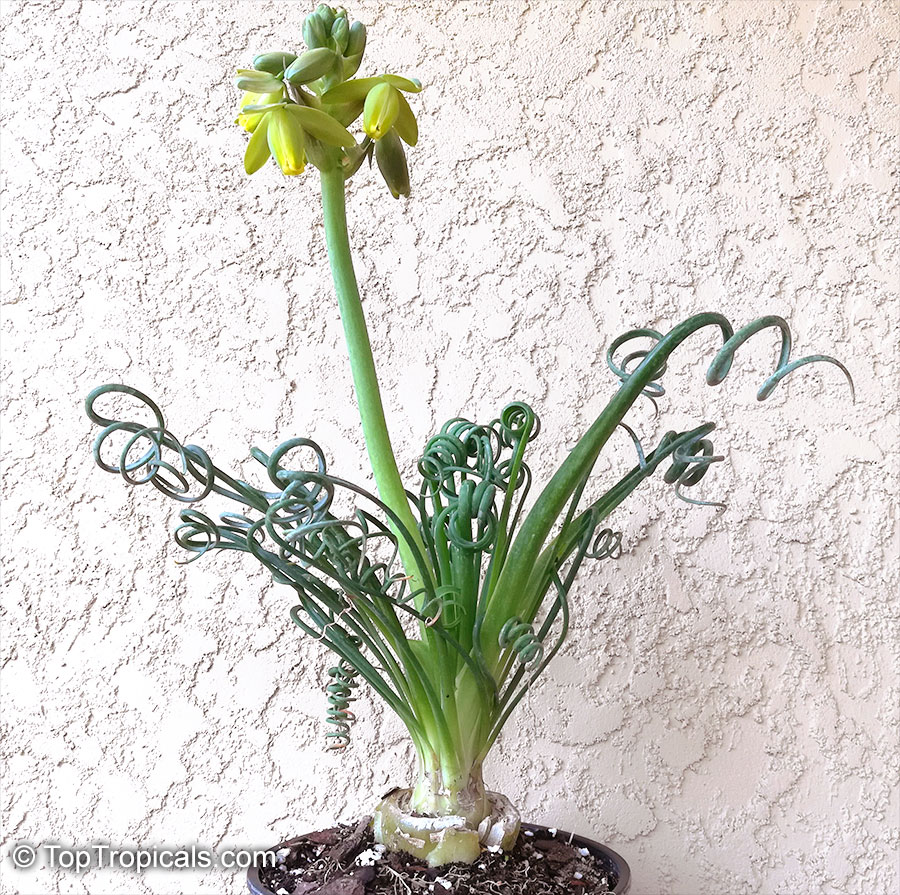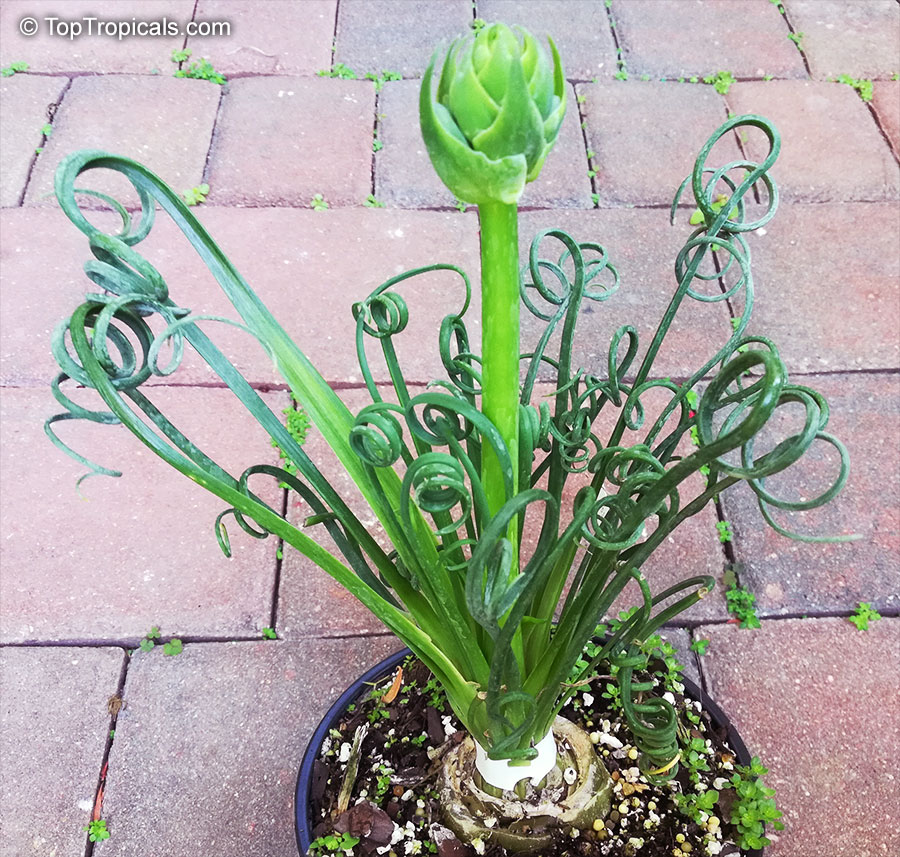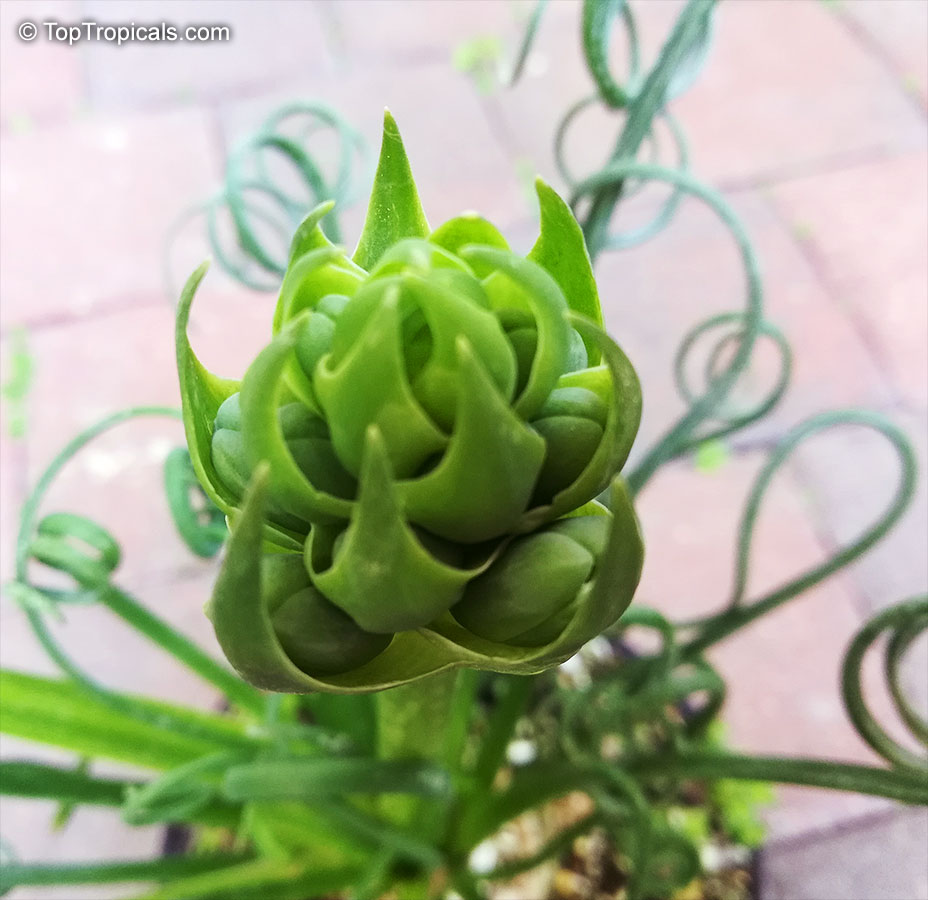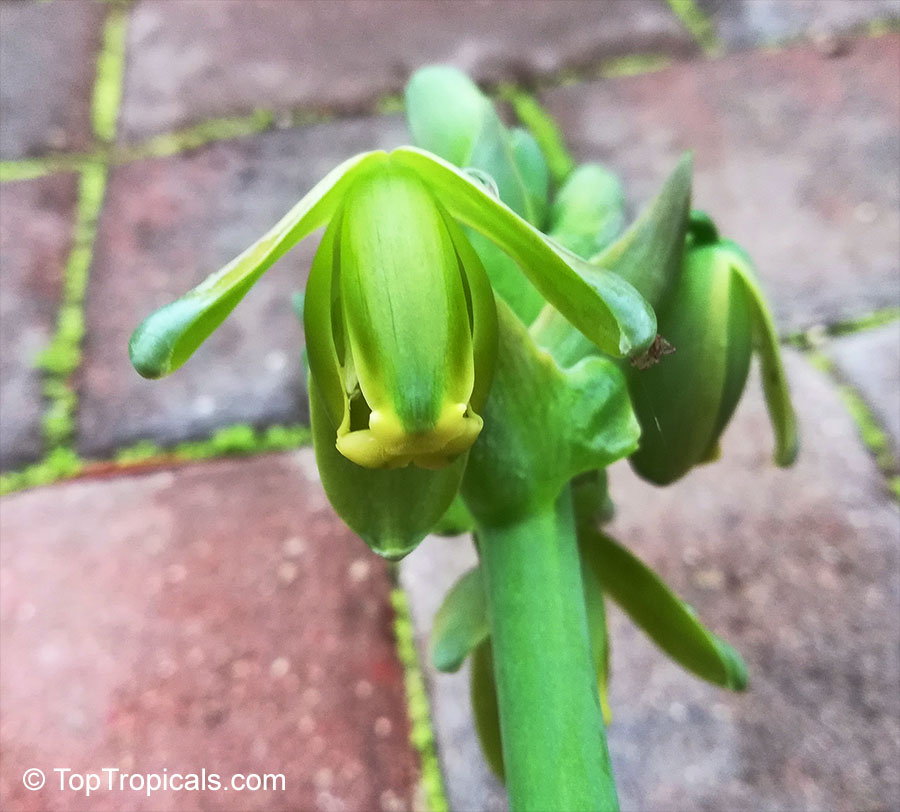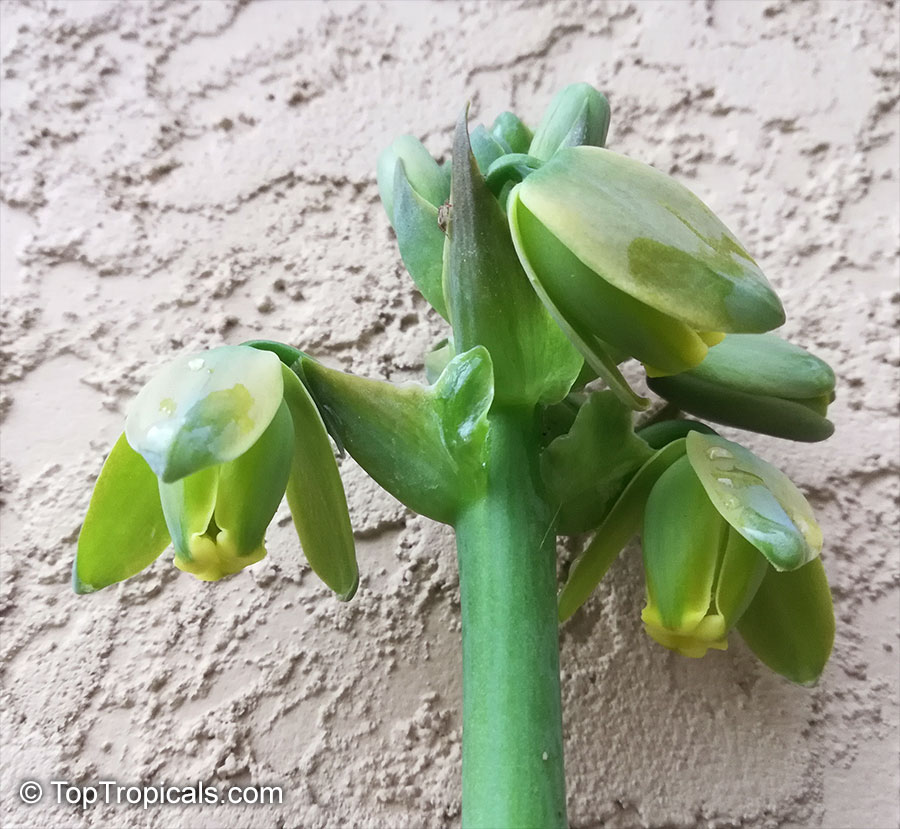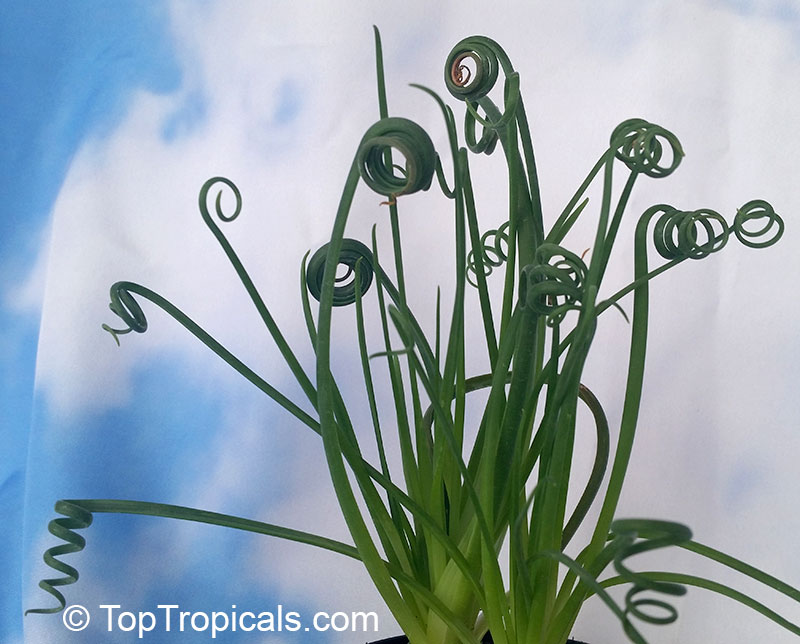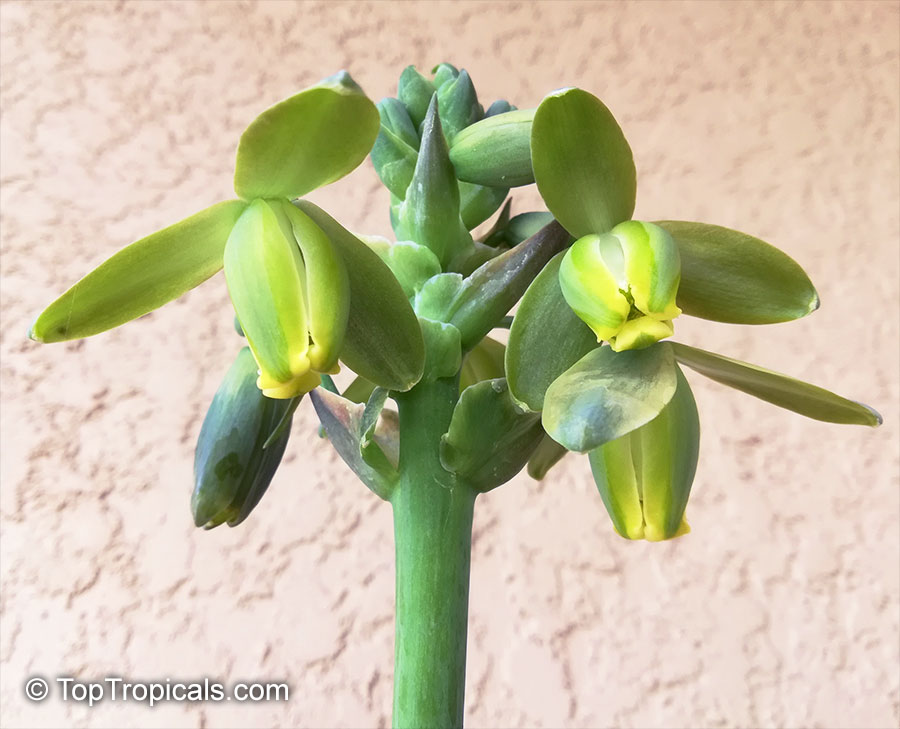Groundcover and low-growing 2ft plant - Search results
Top Tropicals Plant Encyclopedia
| Number of plants found: 383 | Next | 
|
Go to page: | 1 | 2 | 3 | 4 | 5 | Last |
Botanical name: Acacia redolens
Common names: Trailing Acacia, Bank Catclaw
Family: Fabaceae
Subfamily: Mimosoideae
Origin: Australia







Acacia redolens grows in full sun and is considered a large shrub, 5-10 ft tall. The yellow-orange flowers are an attraction for butterflies and hummingbirds. With proper care, plant can be grown in USDA hardiness zones 9 through 11. For gardeners in cold regions, the trailing acacia can be grown in a pot and brought indoors in the winter. To keep it healthy through the winter months, Acacia redolens should be placed in a sunny window and watered regularly. With plenty of sun, proper water, and occasional fertilizer, Acacia redolens will thrive indoors.
The plant is native to Australia and can be planted in a variety of landscaping situations. Its interesting and attractive foliage, along with its ability to tolerate drought, flooding, and cold temperatures make it a worthy addition to any garden. For those looking for a low-growing shrub with attractive, orange and yellow flowers, this Acacia species is a great choice.
Botanical names: Acalypha hispaniolae, Acalypha pendula
Common names: Strawberry Firetails, Dwarf Cat Tails, Kitten's Tail, Trailing Acalypha, Firetail Chenille Plant
Family: Euphorbiaceae
Origin: Haiti and Dominican Republic






Dwarf Chenille Plant gets its common name from the fuzzy plumes of tiny, foxtail-shaped bright red flowers that trail above a thick mound of small, serrated leaves. Given enough light, this plant blooms nearly year-round! The blossoms that begin as wispy buttons and elongate into fuzzy cones. At maturity, they become 3-4" long streamers.
A spectacular plant for a hanging basket, container or ground cover, it is heat tolerant, great for both hot Southern landscapes or as an easy houseplant, providing bright light.
Place this unusual house plant on a pedestal stand or pot it in a hanging basket to show off those eye-catching fuzzy blooms.
This is a dwarf plant that stays small and doesn't need pruning. It's naturally bushy, so you don't have to pinch its growing tips to get it to branch out.
A favorite with children, and cats too!
Recommended Fertilizer: SUNSHINE Megaflor - Bloom Nutrition Booster
Botanical names: Acmella oleracea, Spilanthes oleracea
Common names: Toothache Plant, Paracress, Botox Plant, Jambu
Family: Asteraceae
Origin: Brazil









Toothache Plant is a medicinal herb that has been used for generations to manage the pain of toothaches. Both the leaves and the attractive golden flowers can be used as a natural anesthetic. Simply chew the leaves or flowers for a few seconds then you will experience a tingling and numbing sensation in your mouth. An infusion or tincture made from the Toothache Plant is said to promote gum and throat health due to its strong antibacterial properties. For culinary purposes, small amounts of shredded fresh leaves are said to add a unique flavor to salads. Cooked leaves lose their strong flavor and may be used as leafy greens. Both fresh and cooked leaves are used in dishes such as stews in northern Brazil. They are combined with chilis and garlic to add flavor and vitamins to other foods. The use of jambu extract as a food flavor is described as having an odor of citrus, herbal, tropical or musty odor, and its taste can be pungent, cooling, tingling, numbing, or effervescent.
Acmella Oleracea extract is considered a natural alternative to Botox. Applied topically, Acmella Oleracea reportedly reduces muscle tension, reducing facial wrinkles caused by tense or contracted facial muscles. It is considered a natural muscle relaxant and has been traditionally used as an herbal Orajel of sorts, thanks to the presence of analgesic alkylamides called spilanthol. This spilanthol is thought to have the same paralyzing effects on facial muscles as it does on gums, reducing wrinkles by relaxing the skin. It's seen in topical formulas and can easily penetrate the skin, inhibiting contractions in subcutaneous muscles.
The plant is a small, erect, it grows quickly and bears gold and red inflorescences. It is frost-sensitive but perennial in warmer climates. Can be grown in a container and as a houseplant.
Botanical names: Aeschynanthus radicans, Aeschynanthus lobbianus
Common name: Lipstick Plant
Family: Gesneriaceae
Origin: Southeast Asia









Aeschynanthus is a large genus of Old World tropical herbs, similar to the genus Columnea in Central and South America. Both are often trailing epiphytes with large, showy flowers.
The appearance of the various Aeschynanthus species varies widely. The original "Lipstick Plant" has shiny, hard-surfaced leaves with bright red flowers that emerge from a dark red tubular calyx, resembling lipstick emerging from a tube. It is an epiphyte that grows in the angles of branches in the rainforest. As with all epiphytes, it does not live as a parasite on the tree, but takes its nourishment from fallen leaves and twigs that accumulate in the crevices of branches.
To care for the Lipstick Plant, it needs plenty of light but not direct sunlight. They thrive in summer heat, and winter temperatures should not drop below 60 degrees. It should be grown in semi-shade and needs regular or moderate water. If you live in a colder area, you can grow it in pots and make sure to water it regularly and keep the soil evenly moist.
Botanical name: Aeschynanthus sp.
Common names: Lipstick Plant, Lipstick Vine
Family: Gesneriaceae
Origin: Southeast Asia








A very attractive flowering vine, that is mostly used in hanging pots. Water freely durning spring to fall, but keep the soil a little drier in the winter. The trailing stems can be 2ft long, so they may need pruning after flowering has finished. The plant tolerates most house temperatures. Ideal temperatures are 60 degrees at night but 10 to 15 degrees higher during the day. A. pulcher is one of the classic lipstick plants, and is similar to A. lobbianus -- except for the tan colored calyx.
Botanical name: Aeschynanthus speciosus
Common names: Basket Plant, Lipstick Plant
Family: Gesneriaceae
Origin: Southeast Asia








Aeschynanthus speciosus is a species of flowering plant native to tropical rainforests. It is known for its large, fleshy, dark green leaves and colorful flowers, which can be red, crimson, or vinous in color, with yellow or orange interiors.
In cold regions, this plant can be grown in containers and brought indoors during the winter. To prepare the pot, mix equal parts potting soil, peat moss, and perlite, and keep the soil moist. During the growing season, fertilize the plant every two weeks. In USDA Zone 9-11, it can be grown in full sun and should be watered once a week.
Aeschynanthus speciosus is an excellent choice for hanging or trailing plants, and is suitable for a greenhouse, sunroom, or conservatory. It thrives in high humidity and warmth, and requires strong, indirect light. As a groundcover, it can be planted up to two feet apart in shade or semi-shade. It blooms from late spring to fall.
Botanical names: Agapetes serpens, Vaccinium serpens
Common name: Creeping Agapetes
Family: Ericaceae
Origin: Himalayas






Agapetes serpens is an evergreen perennial, also known as Creeping Agapetes. It can be grown as a groundcover, or as a small shrub, depending on its cultivation and environment. Growing from 2 to 5 feet in height, this hardy species loves semi-shade and will thrive best with regular watering.
Agapetes serpens is best known for its beautiful red, crimson, and vinous flowers. The petite blooms are incredibly rich-looking, resembling delicate little Chinese lanterns with their chevron patterns. Not only are these flowers stunning, but they also attract butterflies, hummingbirds, and other wildlife. Once the flowers finish blooming, they're replaced by colorful and shiny berries, which look like lavender pearls.
Agapetes serpens is hardy in USDA Zone 9-11 and can tolerate cold temperatures. Those growing in cooler zones should ensure they plant the shrub in a pot so they can be moved indoors when needed. This will also help keep the leaves safe from extreme cold weather and frost. Indoors, reasonably moist soil and warm indoor temperatures should be maintained for best results. When planting outdoors, ensure that the soil does not become too dry, and water regularly during dry spells. Pests are generally not a problem and regular pruning is advised to keep the bush looking its best.
Agapetes serpens is a stunning low-growing plant that has graced gardens for many generations. Its unique flowers, vibrant berries, and lush foliage adds a unique sense of grace and wonder to any garden. With proper planting, maintenance and care, Creeping Agapetes will continue its spread from the Himalayan foothills to garden settings all over the world.
Botanical name: Agathosma gonaquensis
Common name: Gonaqua Buchu
Family: Rutaceae
Origin: Southern Africa








This plant is low-lying, compact, rounded and spreading. It produces masses of white flowers, and the natural oils within its leaves produce a pleasant fragrance when the foliage is crushed or handled. Once established, it withstands both drought and frost.
Botanical names: Ajania pacifica, Chrysanthemum pacificum
Common name: Pacific Chrysanthemum
Family: Asteraceae
Origin: Japan










Ajania pacifica forms a bushy mound of lobed green leaves, attractively edged with silver, remaining attractive all season long. Some gardeners grow this plant primarily for its foliage. Small yellow button flowers appear very late in the fall, sometimes lasting until Christmas. It is quite hardy in cold climates, going completely dormant in cold-winter regions, but in warmer climes it is more-or-less evergreen (though at its best in spring and summer).
Botanical name: Albuca spiralis
Common names: Frizzle Sizzle, Corkscrew Albuca
Family: Asparagaceae (Formerly:Hyacinthaceae / Liliaceae)
Subfamily: Scilloideae
Origin: South Africa









Albuca spiralis or Frizzle Sizzle, also known as the Corkscrew Albuca, is a unique and easy-to-grow plant native to South Africa. With green onion-like leaves that appear curled, each plant has its own distinct personality. It can reach between 2 to 5 feet tall with a spread of 5 to 10 feet, making it suitable for use as a groundcover or low-growing border. It also looks great in rock walls, perennial beds, and cottage gardens and can even be used for bonsai training.
In the spring, the plant produces spikes of orchid-like chartreuse-yellow flowers that have a light vanilla fragrance. It may occasionally rebloom later in the season. Frizzle Sizzle is hardy in USDA Zone 8-10, or it can be grown as a houseplant in colder regions. Just be sure to bring it indoors if the temperature drops below freezing. To care for this plant, give it lots of sun and well-draining soil, and allow the soil to dry out between waterings, similar to how you would care for a succulent.
Frizzle Sizzle is an ideal plant for home gardens as it is low maintenance and has no pest or disease problems. In colder climates, it can be overwintered indoors on a sunny window sill or allowed to go dormant by stopping watering and storing in a cool, dry location. So if you're looking for a fun and eye-catching plant that's easy to grow, consider adding Frizzle Sizzle to your collection.
| Next |  |
Use link to repeat this search:
https://toptropicals.com/cgi-bin/garden_catalog/cat.cgi?search_op=and&keyword_op=and&language=e&number=10&no_change_lang=1
&v1=grd&user=tt&sale=1&first=0
